How often are you thinking about credibility? Let's consider that from the viewpoint of the only people that matter: your customers. Credibility is simply Trust, with a capital "T."
Customers either trust you, or they don't. What are the essential tips for building credibility? So let's review seven things you need to foster more credibility with your customers.
There is only one you. People respond well to sincerity. What makes your company different from everyone else out there?
Your brand's voice is what gets noticed. When it feels genuinely authentic, customers respond positively by aligning themselves with an emotional attachment to that brand. They see themselves in it somehow.
This is the power that Apple, Harley-Davidson, Nike, and Peleton wield.
The reason why they dominate their market category is that everything they do is authentic to their brand. If you removed their logo from their marketing, I'll bet you would still think of them looking at the piece.
What makes your company authentic? It has to resonate truthfully with your customers. Take the brands that you enjoy in your life. Why do you always buy that same ice cream, car, phone, or shoe?
Authenticity isn't about price. It's about emotional alignment. That is what strengthens the credibility of your company with the customer.
Are you there for your customers? This is both from the customer service and a foundational emotional standpoint.
For example, let's say a client had a problem. What are the lengths you would go to solve it? Are you flexible enough to offer alternatives?
Yes, I realize that "client has a problem" is probably too general, but are you looking at the challenge from their point of view?
For example, a few years ago, a time-sensitive apparel order for an event was aboard a FedEx plane that crashed. We completely reordered and produced a duplicate order and got the shirts for the event in time to be handed out. Our actions said, "We got your back" more than anything that could be verbalized.
This is how not only lifelong customers are created, but ones that become your most significant marketing champions out there in the "real world."
What actions are you taking to generate this type of credibility daily?
If there are any lessons that someone could take away from the COVID pandemic is that everything can change instantaneously. Basically, as soon as the NBA canceled their games in March of 2020, the entire world seemingly followed suit. Imagine professional basketball being the canary in the coal mine for trends in health and safety!
What followed was chaos. Entire industries were wiped out. Workers everywhere were disrupted.
Embedded in that chaos, though, were opportunities. People willing to do something new or change how they operate found success. For some, that genie isn't going back into the bottle.
This happened by experimenting and learning. Being open to change, trying new things, failing, and then improving.
It all happened relatively quickly too. FYI, to this day, my family still orders our groceries on a tablet, swings by, and picks them up. Now, it has less to do with health reasons and more to do with the convenience factor.
Were all the orders perfect? Of course not. But, the credibility happened when they made things right. Or suggested alternatives.
What is interesting now is that the stores are learning what we order. Occasionally, some free samples are tucked in with the order for products to try. They know that as consumers, we are not wandering around the store looking at the end cap displays or drifting by the free sample table.
Once you understand your customer and have some data, what are you doing with that? How can you apply what you have learned from them to build a better relationship or sales engagement?
I shouldn't have to say this. As we all know, "Honesty is the best policy." However, when stressed, people throw out all sorts of words that may or may not be entirely valid.
Remember this. It is ok to say no.
Customers and employees would rather know the truth in a situation than a mealy-mouthed excuse as to why something can't happen.
For most of my entire career, I've been on the operational end of the stick. Salespeople are notorious for agreeing to things not based on actual physical reality. Why? Because they don't want to "lose the sale."
They agreed to that rush order, even though the production schedule was already overbooked. They don't have to stay late to get it out, so why not? But when push comes to shove and that order misses the ship date, all that happens is a lot of finger-pointing internally and a customer that doesn't trust you.
Want more credibility?
Don't agree with things that aren't feasible. For example, "I'm sorry, checking our schedule, it looks like Friday won't work, but the following Thursday shouldn't be a problem." Maybe the customer needs that order on Friday, but perhaps Thursday is just as good.
But when you use the truth in the situation as a guideline, you are not setting yourself up for failure or mistrust if things go south. When your shop gets the industry reputation for hitting deadlines, that always drives more customers to your door.
What doesn't work is angry customers. When you agree to a production deadline and fail, those customers aren't returning and might even flame you publicly online."I'm sorry, I can't take that order due to the timeline and parameters of the job. But… here's what I can do…" is always how to handle it. Your credibility is wrapped up in the truth that you deliver.
People always want to know what to expect. Most folks hate irregular outcomes, confusion, or spotty service.
Want more credibility? Build your processes and a company culture based on consistency.
When you not only show up but are excellent in what you do, you will instantly be in the top echelon of companies out there.
Why?
Because most of your competition can't deliver at that level. This means executing excellence in every detail. All the time.
From how you answer the phone to how you put a label on a box, there should be a right and wrong way of doing things.
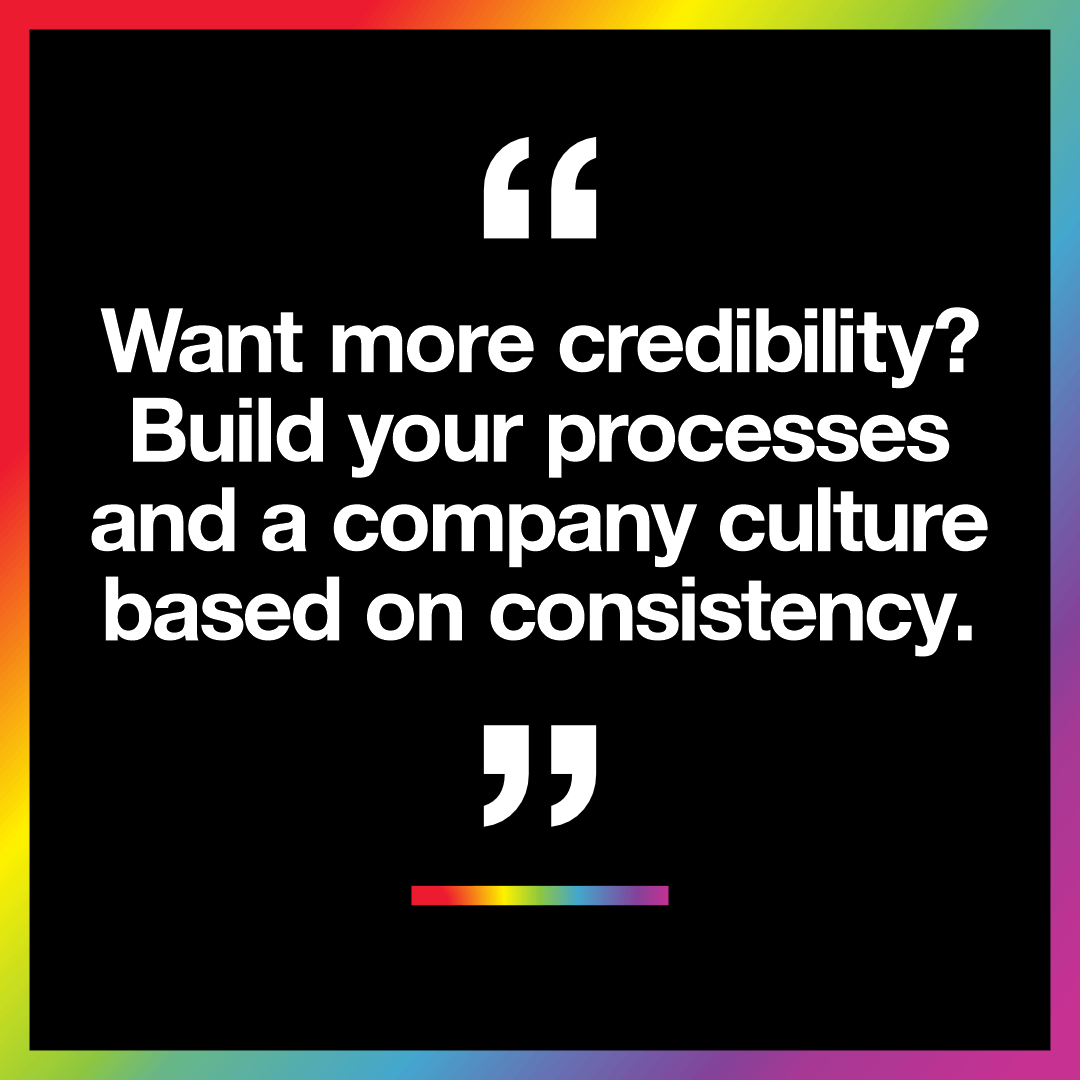
As a discussion point, I want you to consider the word "remarkable." Remarkable means that other people are so impressed with something that they will talk about it.
So, here is a question for you. Is your company so consistently excellent that your customers constantly talk about you? Are your current customers delivering new customers to your door?
If not, chances are something is missing. I'll bet that it is something to do with consistency.
Remember, everything you do is filtered through the eyes of your customers. Therefore, a big part of building customer credibility aligns with the notion of being trustworthy.
This means that you keep your promises. For example, "I'll shoot you that quote in about an hour." But it doesn't go out until tomorrow morning. So even though you spend time checking inventory or trying to solve a problem, it is a mental failure to your customer.
When you don't keep your word, that affects the mental picture someone has of you, regardless of the reasons.
While you are working on the problem, don't go radio silent! Instead, shoot them a quick message that says, "Hey, I" m checking on a few things for this order, and it is taking longer than expected. However, I should know something soon. Hopefully by the close of business, but it could be tomorrow."
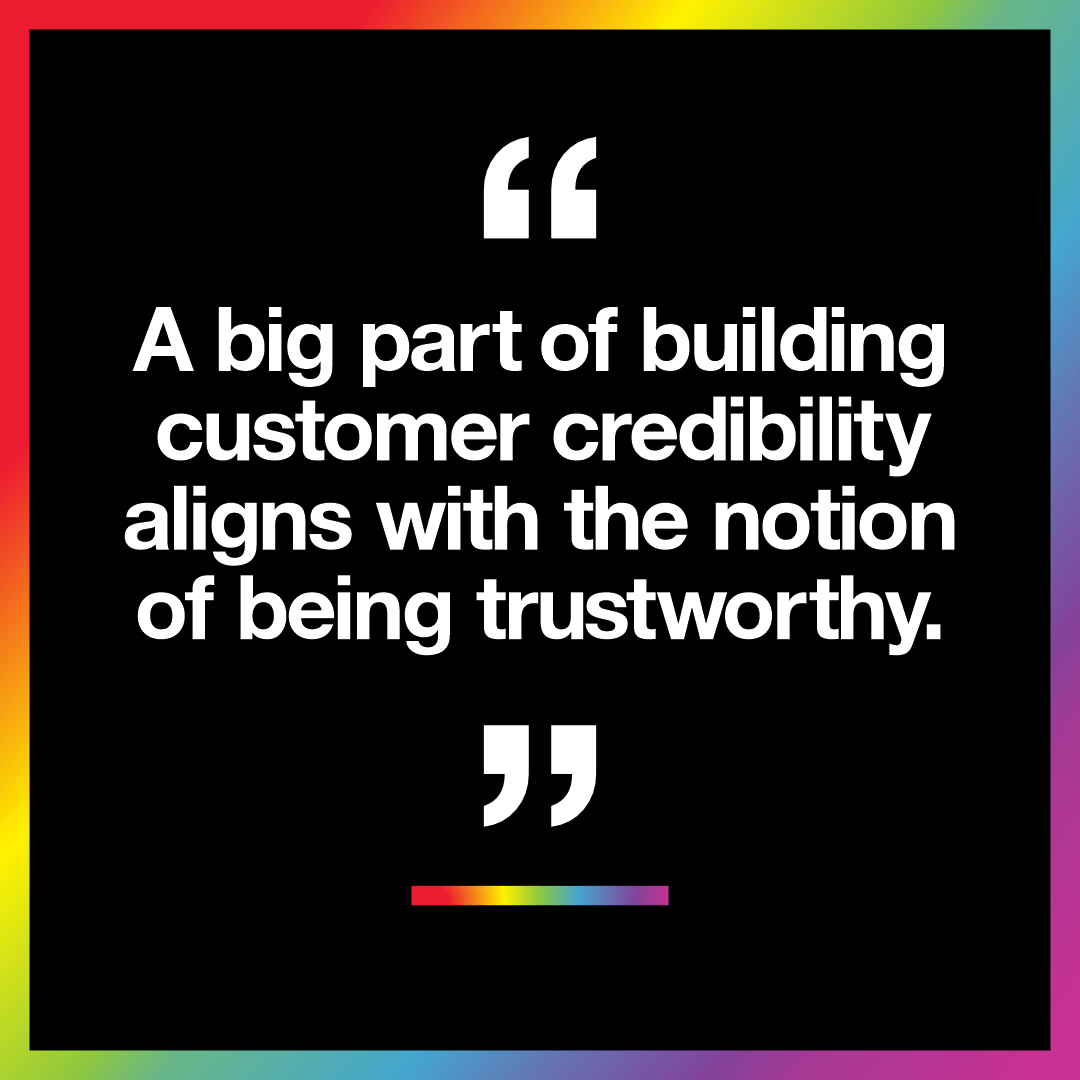
That's all it takes.
The issue here is that people make up stories in their heads about what is going on when they don't hear from you. Status check-ins are a great way to build the trustworthiness you want with a customer.
A great example is that you can track the actual vehicle with many different types of businesses, from pizza delivery to air conditioning service to windshield replacement. "Where are they?" apps feed the need for what's happening.
How are you building more trust with your customers by providing them with status updates and information before they ask for it?
I've saved the best for last. So many people in this industry operate out of their garage, basement, or spare bedroom. There is nothing wrong with that. Apple was famously founded in a garage. So was Disney. Facebook was launched from a dorm room.
Where you start has less of an impact than what you do.If you are stuck on what to do next, the simple phrase, "What would a professional do?" is an excellent place to start working on the solution. Being a professional is a mindset that will unlock many opportunities if you use it as your Northstar.
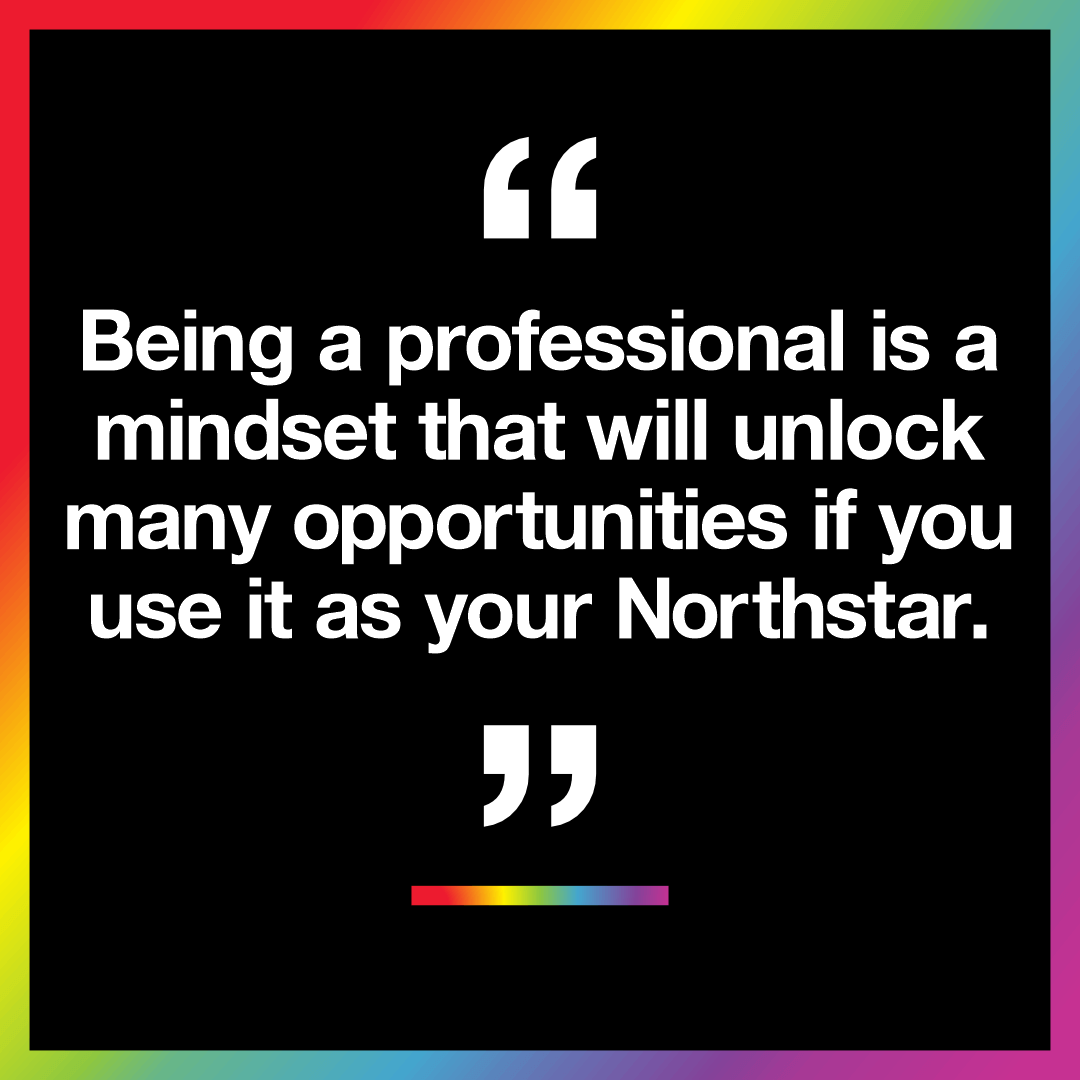
For example:
If you want your company to be more credible, then consider how you relate to the mindset of being a professional.
I'm not talking about how you look or dress. Instead, your focus should be on the intended outcome and the results you deliver for your customer. So in every step of your business, from how you quote to how you ship a box, ask if this is the most professional way to handle it?
Chances are there is something better out there. The fun part is searching and finding new things to make something better.
That's what drives credibility.
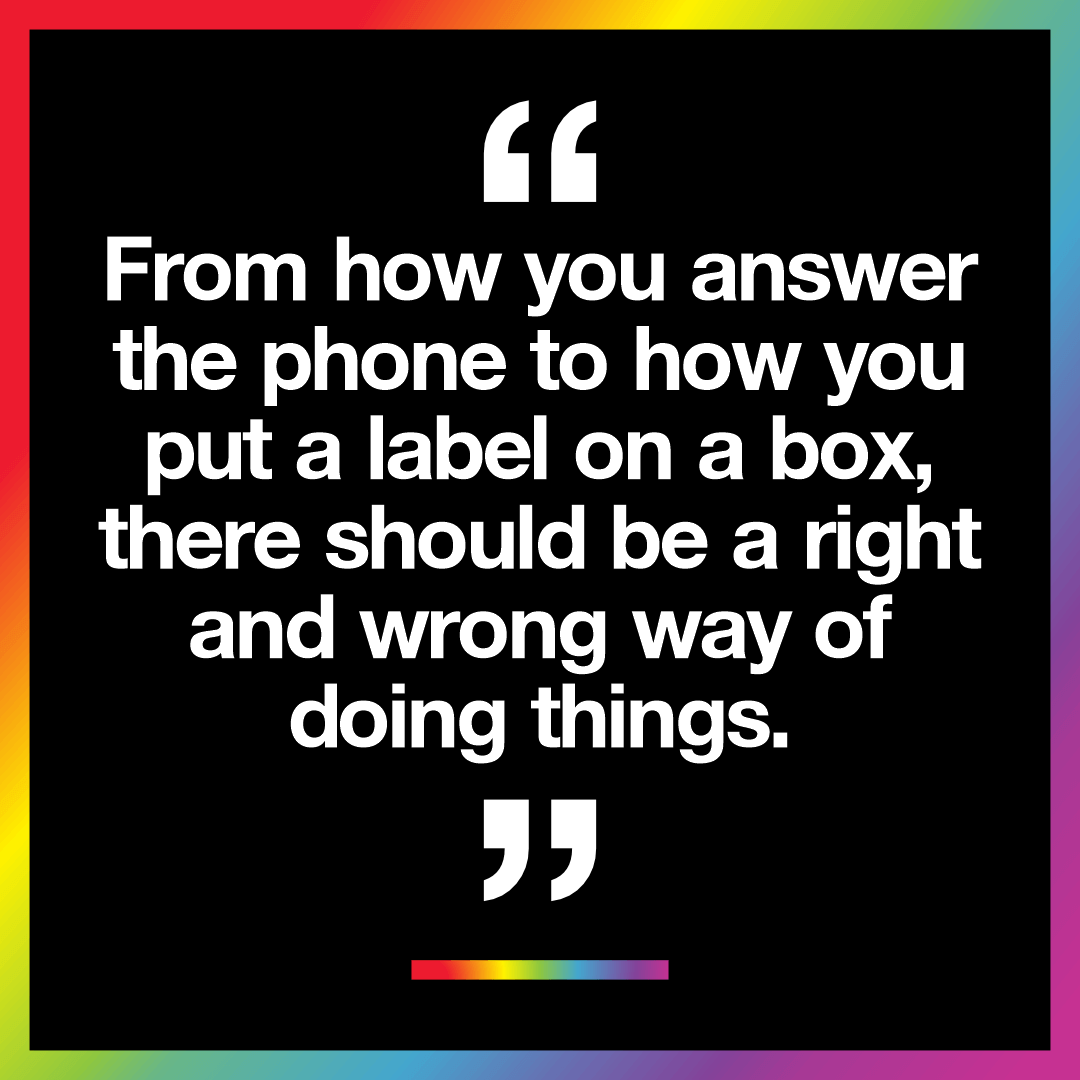
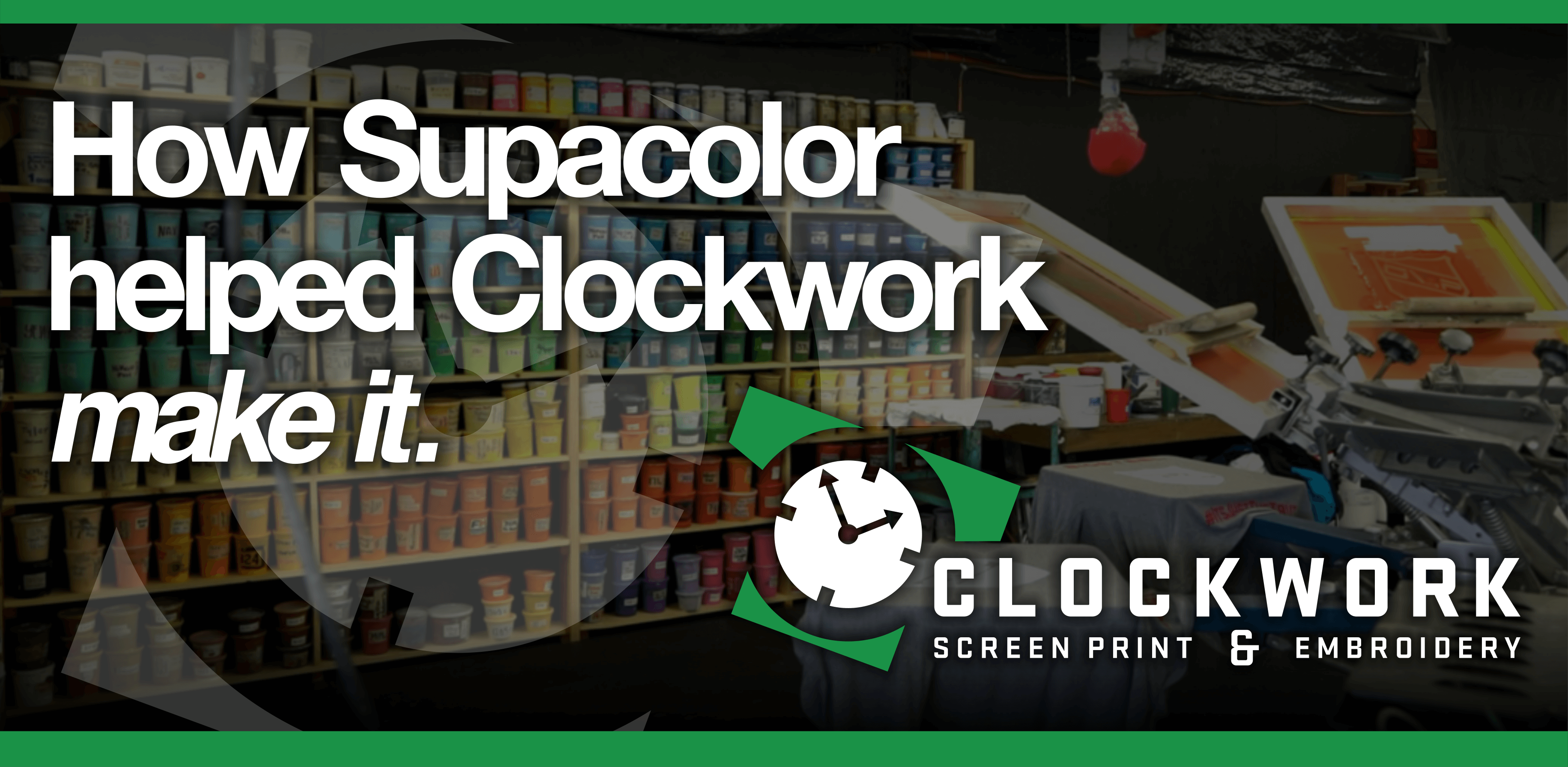
Clockwork Screen Print & Embroidery is a boutique, community-centric garment decorating business in El Segundo, California. Family-owned and operated by Dakota and Kimarie, they pride themselves on offering clients a customized experience that includes garment sourcing and various decorating techniques.
However, in their early days, they were turning down customers with complex jobs, including low minimums, hard-to-decorate locations, and high color counts.
Kimarie remembers one example. “A local little league needed custom jerseys for 300 players,” she said. “They wanted three designs, each in a different placement, for 15 teams – which meant only 20 impressions of each design.”
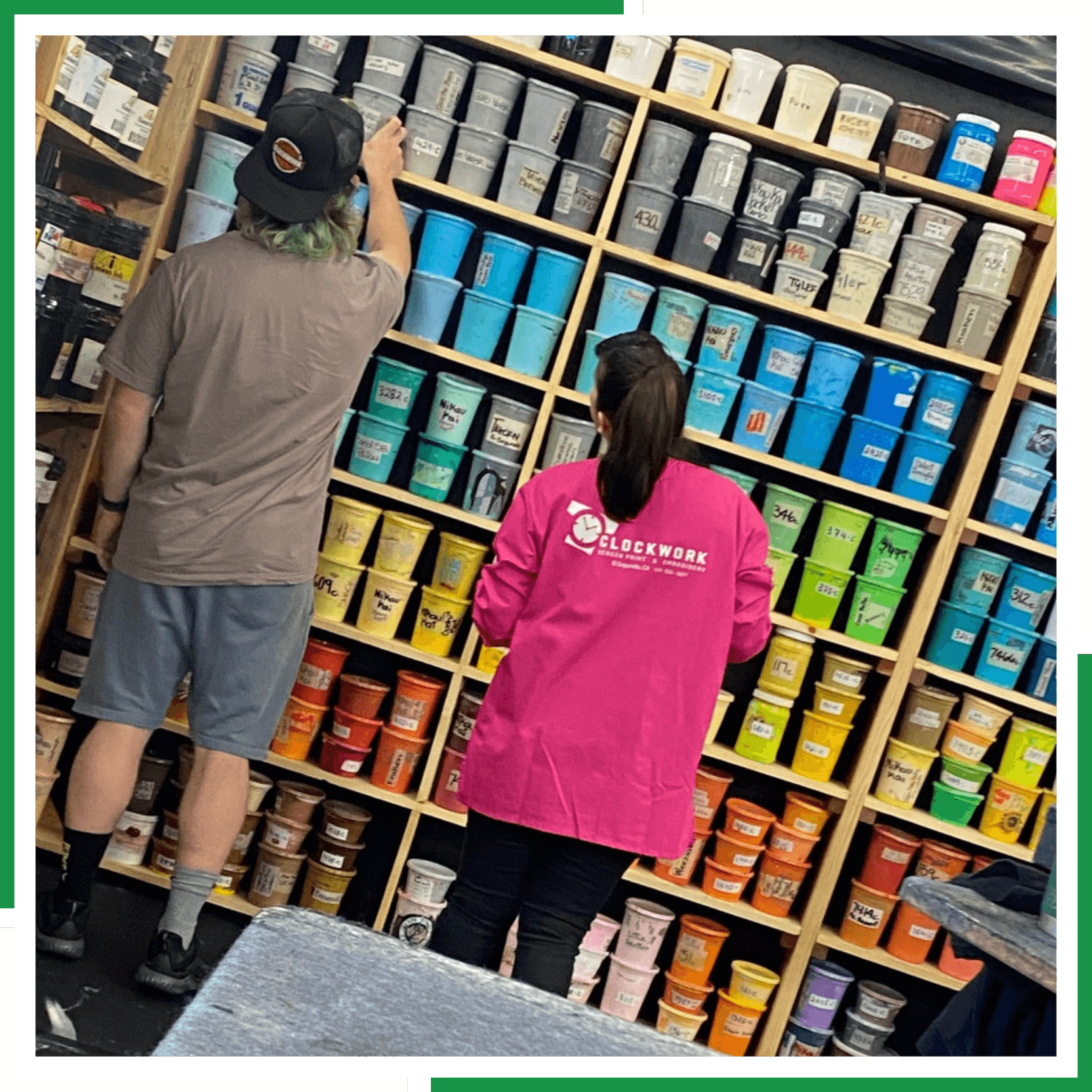
What initially sounded like a larger profitable job ended up being too complex for them to screen print. Priding themselves on serving their community, Dakota and Kimarie got to work looking for a solution for the little league. After some research, they decided heat transfers were the most viable solution because it would give them the flexibility to do the customization required at lower volumes. They explored manufacturers and eventually partnered with Supacolor.
Instead of turning the project down, they exceeded their customers’ expectations. Three years later, that little league is a seasonally returning client for Clockwork. And they’re not the only ones. That first project was the catalyst for them to grow their business using heat transfers. Today, Clockwork’s facility features a dedicated heat pressing department, which has paid dividends.
“Supacolor transfers are top-of-the-line quality, and their customer service is incredible. When they say they are here to help us grow, we really feel it. Whether it comes to providing technical resources or educational assistance, Supacolor truly functions as our business partner,” said Dakota, co-owner of Clockwork. “Our business has grown 15 - 20% annually thanks to Supacolor.”
Click HERE to learn more about Clockwork.
Keep up with Clockwork’s latest work by following them on Instagram.
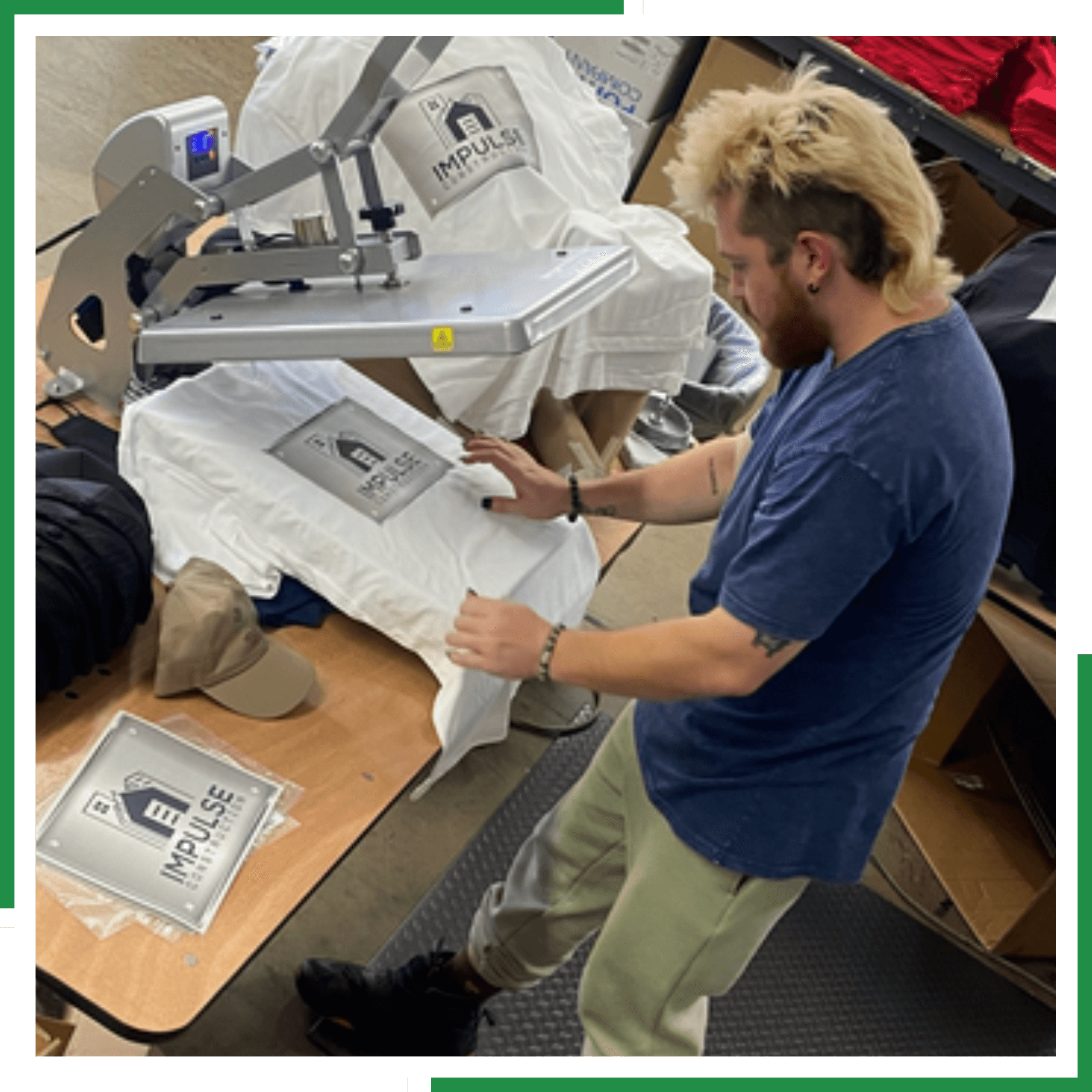
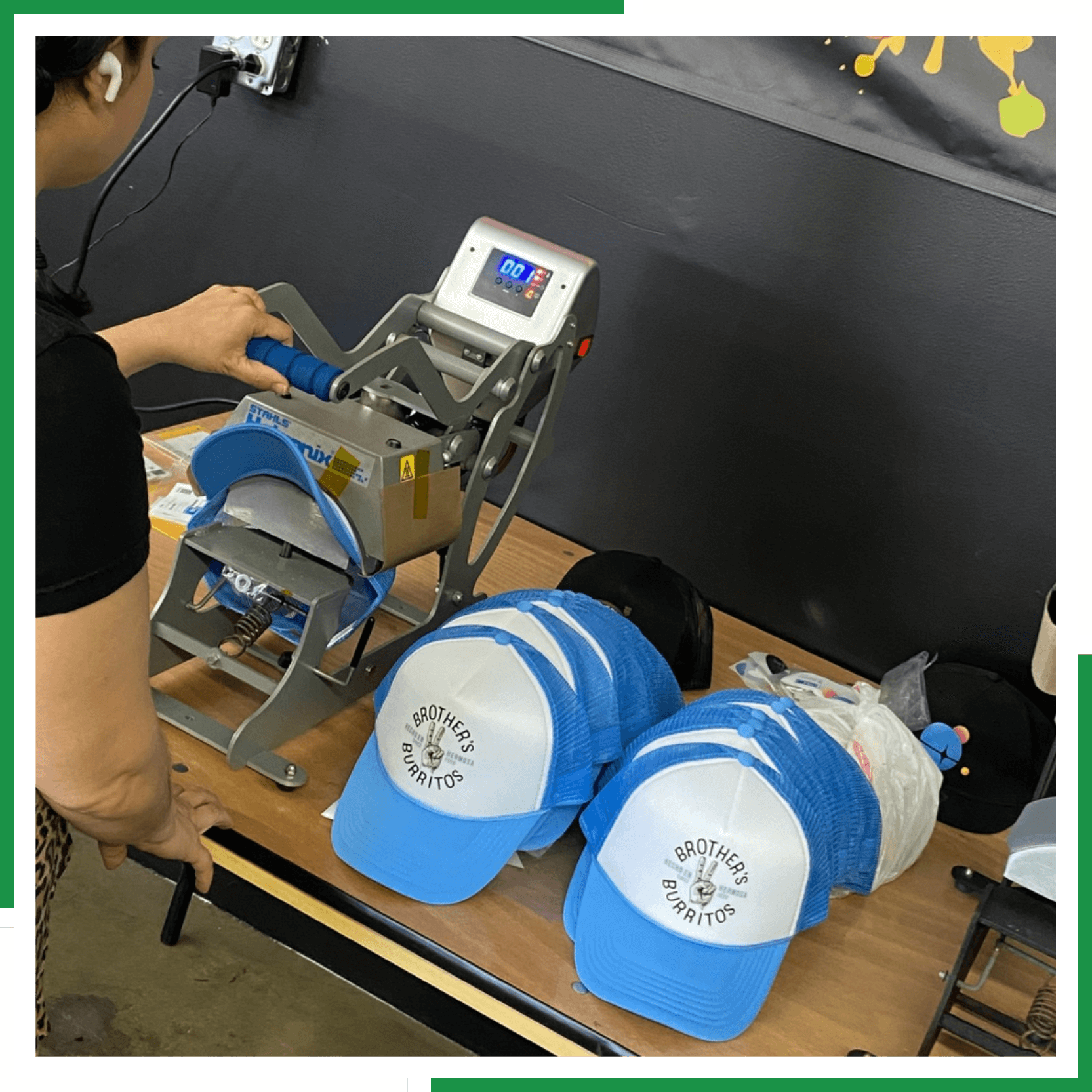
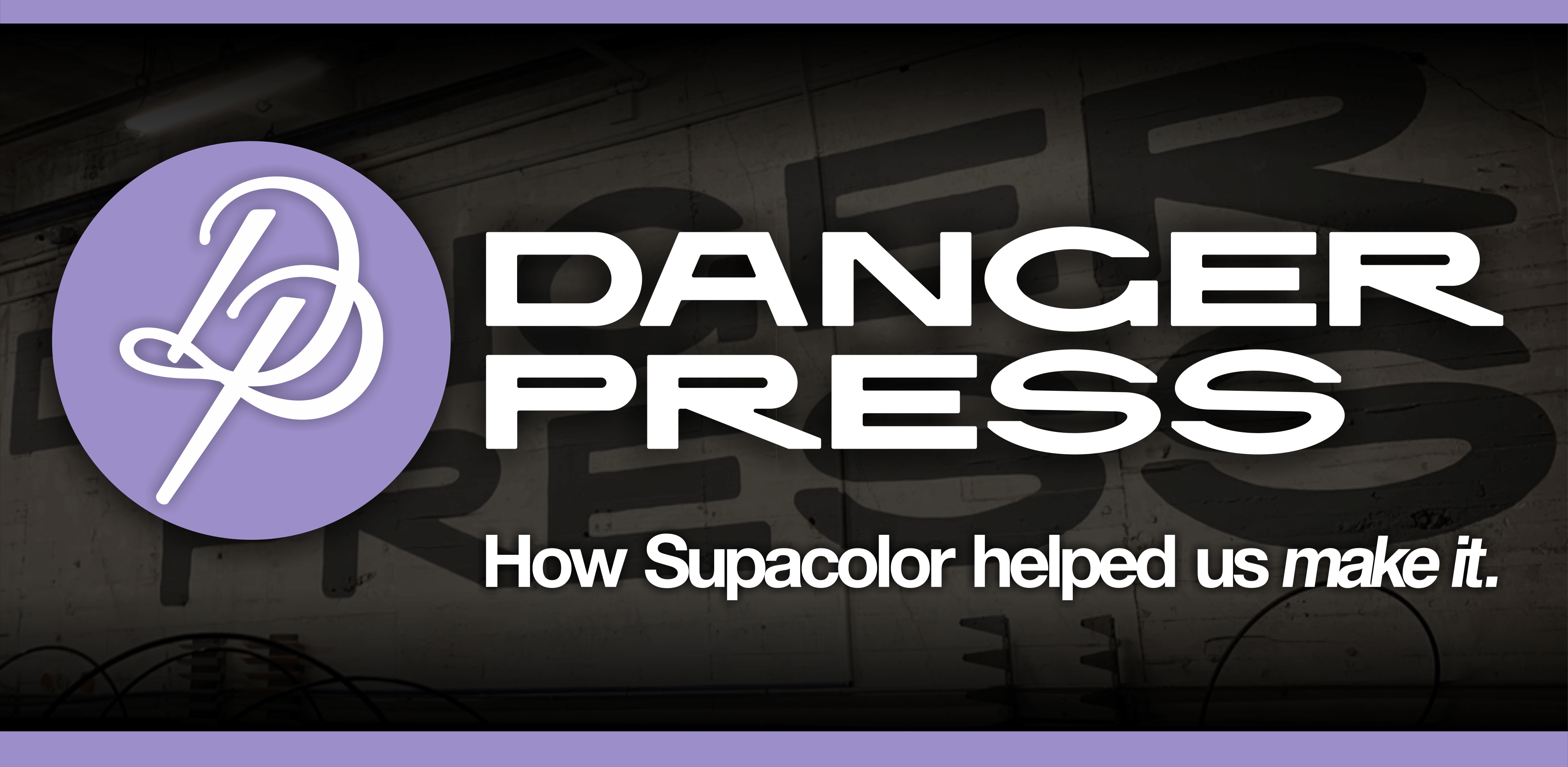
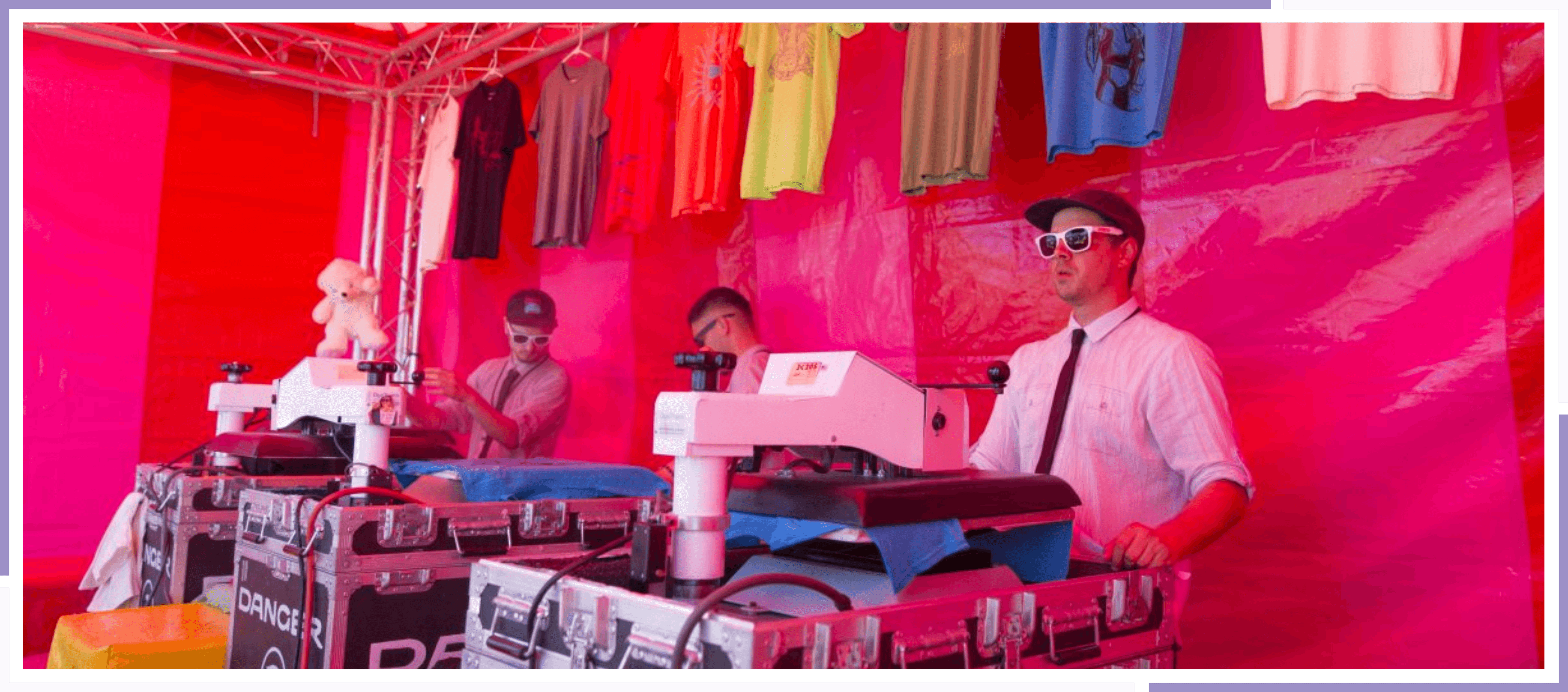
Based in Atlanta, GA., Danger Press is a prominent, full-service garment decorating business with capabilities including screen printing, heat transfers, live printing events, and drop shipping. Danger Press is considered one of the leading print business in the southeast region of the Untied States.
In 2007, Ed Jewell, the owner of Danger Press, was looking for a portable way to dry screen printed ink at live printing events. He took a shot at using a heat press and found it a viable solution. To Ed’s surprise, he discovered that it provided several other unexpected benefits, such as eliminating the need to first put down a white ink base. Heat pressing was saving him time and money.
This got Ed thinking. He realized that heat pressing. and digital printing techniques were on the verge of a breakthrough, and he did not want his business left behind.

Fast forward a few years, and Ed fully incorporated heat pressing into his printing arsenal.
“I use heat transfers as another tool in my tool belt. Without them, I’m not doing my best for my clients”, said Ed. “It’s nice to have mixed media options available for certain jobs. With heat presses, I have a lower investment in equipment and staff while creating additional bandwidth for more jobs. Using a small 4'x4' area in my shop, I can now take on more business. Small investment, significant return. Bottom line, heat transfers let me serve my customers better.”
Check out the Danger Press website HERE, and learn more about what Ed and his team do.
He said to me, “I’m so stressed out. I’ve been working fifteen and sixteen-hour days for weeks on end. I can’t seem to get off the work treadmill ever. I need help!”
Sound familiar? I hear something similar to that about twice a month or so from folks trying to build something fantastic. But unfortunately, these people start on a journey that somehow leads them down the road to chaos. By the time they talk to me, the frustration is overwhelming.
The good news is that it doesn’t have to be this way. There are some choices you can make to create something better. This could be for your business, personal time, or even a group or a team. Let’s take a look.
The first place to think about is your idea of what success should look like. Not where you are now. But if all things happen to be magically true, what is that ideal state? To me, the most important thing you can do is to try to be effective. This means that the work and the time you spend have meaning. I’d rather be doing the right thing poorly than doing an excellent job completing the wrong thing.
The reason? If you haven’t outlined what is essential, what matters, or what will make the most significant difference, are you just spinning your wheels? I’ve found out that “Ready, Fire, Aim” doesn’t achieve the desired results consistently.
I often hear business owners describing the hell they are going through, it is primarily a self-imposed problem. They don’t have a plan. There isn’t a direction. Nobody outlined the intended results and labeled what victory looks like. These people just bump along with their businesses until they have backed themselves into a corner one day.
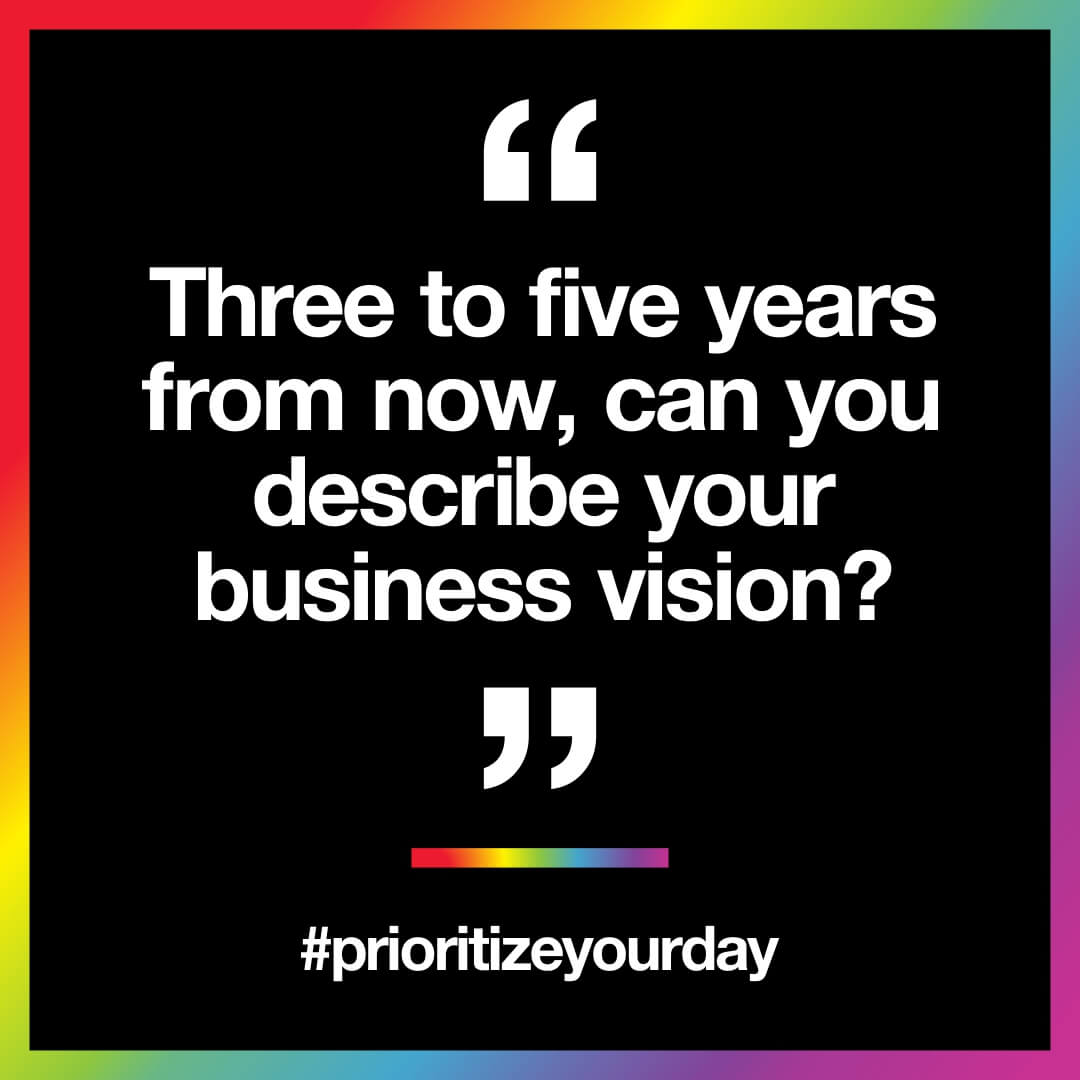
“Now, what do we do?”. So, let’s unravel that knot. Three to five years from now, can you describe your business vision? What customers are you working with? What are your top and bottom lines in revenue? How many employees do you have? Describe your facility and equipment. How are you getting sales? How many different ways does your company make money?
Then, describe the downside. What problems are you going to face? Can you envision the quicksand to avoid? Technology that you need to adopt? Governmental regulations? Supply chain problems? Employee issues? Successful people know why these points matter. Believe it or not, there is such a thing as a “good order” and a “bad order.” There are “good customers” and “bad customers” as well. There are “value-added time” and “non-value-added time.”
This article is about prioritizing your time. I can tell you wholeheartedly that you should spend some quality time analyzing how you are spending your day. For example, are you working on tasks that will help you achieve your vision five years from now? Are the phone calls you are taking, the meetings you are lining up, and the production you need to schedule…are they in line with those goals?
Your vision drives decisions. Can you identify where you are mis-stepping with what you are working on? There are only so many hours in the day, so stop handing over a chunk of your day to things that will not help you realize your goals a few years from now. As my friend Richard Greaves says about time, “There are things that you can not afford to do.”
If you were to equate a minute to just one dollar, how much are you spending a day on non-essential, useless things? I read somewhere that the average worker only puts in about 3 hours of actual work a day in an eight-hour shift. The rest of the time was spent on “other things.”
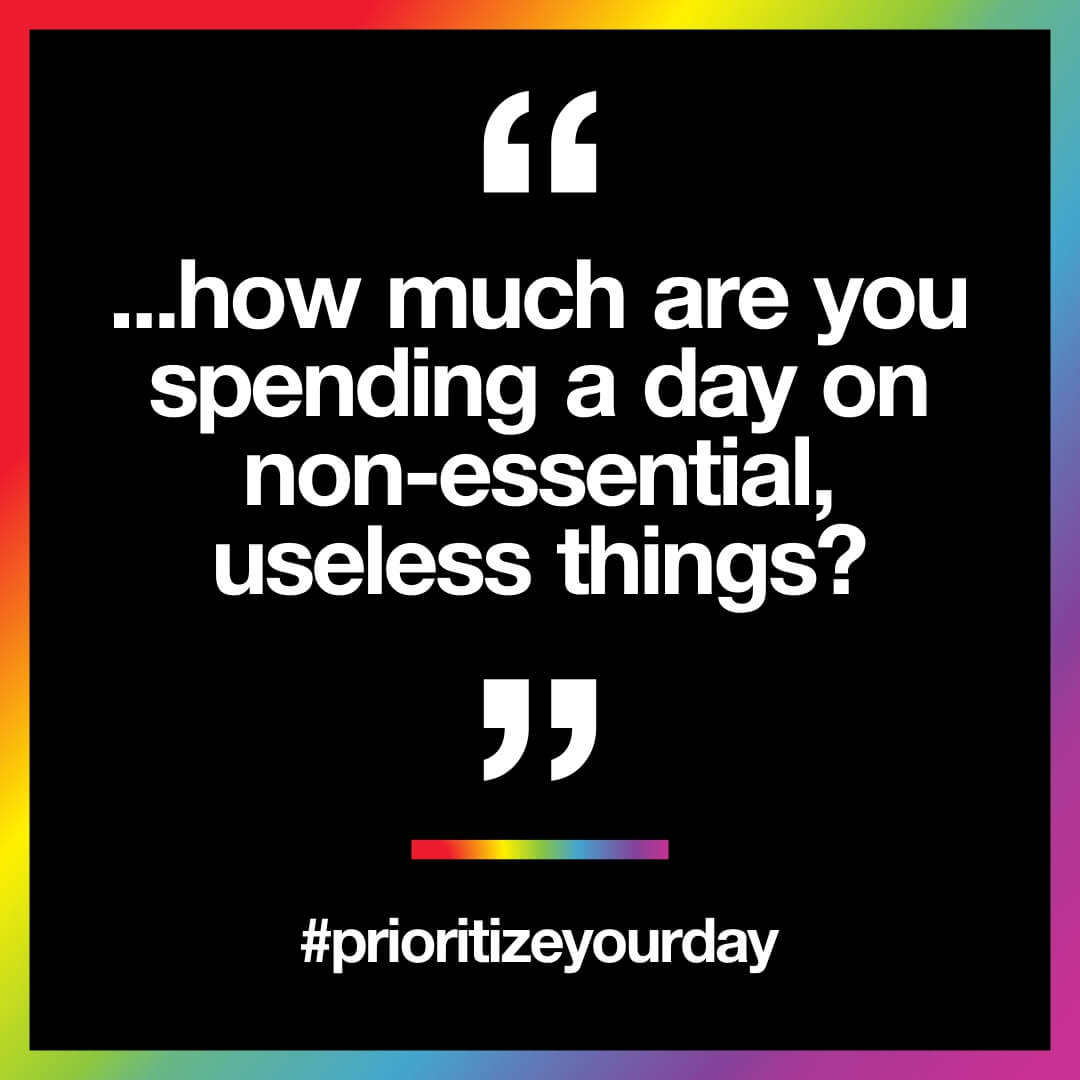
What about you? Or your company? I want you to do yourself a favor and quit using the phrase, “I don’t have time.” From now on, replace that with, “That isn’t a priority.” Because that could be more accurate. You have the time; you simply haven’t prioritized it the way you should. Let’s find out.
The way forward is about identifying what is holding you back with how you use and prioritize time. Then, take a moment to do an audit. It’s not that hard, but it will take some effort. Whip out a yellow legal pad. Get a pen ready. For the next few days or weeks, jot down everything you do all day. What are you actually working on? How much time are you spending on it?
If we were working on improving a manufacturing process, this might be called a “Root Cause Analysis.” We want to uncover the facts about time management and what feeds into your day. Once your audit is completed, see if you can lump similar tasks together. Then, add up the total time for each. Can you express that as a percentage of the time available?
Once you have your list, take a good look at your activities. Rate each type of activity with a “K” for “Keep,” “G for “Give,” or “E” for Eliminate.
What do you like doing or feel you should be handling that task? That’s a “K.” You want more of those challenges, as this is where the payoff down the road will be. Keep doing this type of work, especially if you are highly skilled or enjoy it.
For anything that you can’t do well, don’t want to do, or can’t for some reason…you want to label that with a big “G” and give it away. These are tasks that you delegate. Can someone else on your team handle them? Could you find software to automate it? What about an outsourcing partner such as a virtual assistant or another company?
Lastly, and most importantly, we come to the Eliminator round. That’s right. You do things every day that you simply should stop doing. They get in the way of achieving higher levels of productivity. There should be things on your list that you’ve marked with a big fat red “E.” Let’s be honest here; you will have to find a way to be disciplined with some of these.
For example, I like Wordle as much as the next person. But let’s say that you spend 15 minutes every workday solving that puzzle. Here’s the math: 250 work days per year x 15 minutes = 3,750 minutes. 3,750/60 = 62.5 hours. What could you have possibly accomplished in 62.5 hours? I’ll bet a lot of things that someone once said, “We don’t have time for that.”
Remember that goal that is way over there on the horizon? That’s where we want to go. So it is possible to have the future that you’ve envisioned. But to have a different result than the one that isn’t working, you will have to do things differently.
The first step in the new plan is going to involve your ego. Or, maybe I should write it as YOUR EGO. Many times (hey, I’m guilty of this too), we feel that ONLY WE CAN DO IT. To untangle that knot, you will have to free yourself from this notion. Believe it or not, there are actually people on this planet who can do whatever that task is, just as good or, frankly, better than you can.
This is why you hire people. A few clicks away are some software that can entirely automate your struggling process. And yes, this is why you partner with a company that does something better than you. Like, for example, make heat-applied transfers.
But big egos don’t listen. People with big egos feel offended when someone corrects them. You’ve witnessed that before, right? Therefore, I wish you to put your ego aside and try something new. Remember, your goal is to make your day effective. Meaning that more good things are being accomplished with the available time committed. This doesn’t require your participation and involvement all the time. It can even be automated.
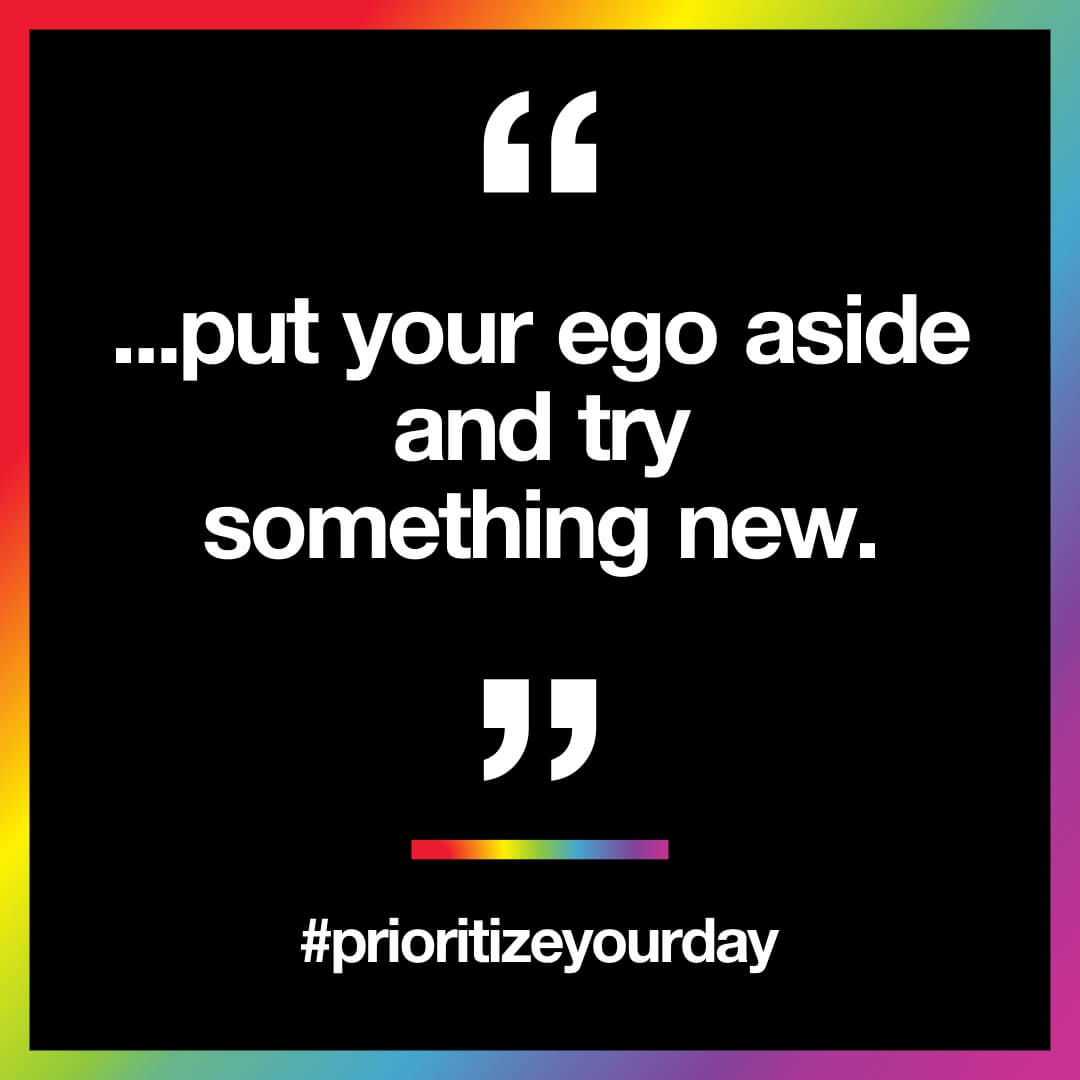
Can you clarify the results that you want before you start? Especially if you are handing something off to someone else? What is the intended outcome?
Prioritizing is about ranking what matters over what doesn’t. When you are clear about the results you want, this becomes much easier. Focus on the goal of being effective with your time, not being “busy.” Be more intentional. Every minute counts.
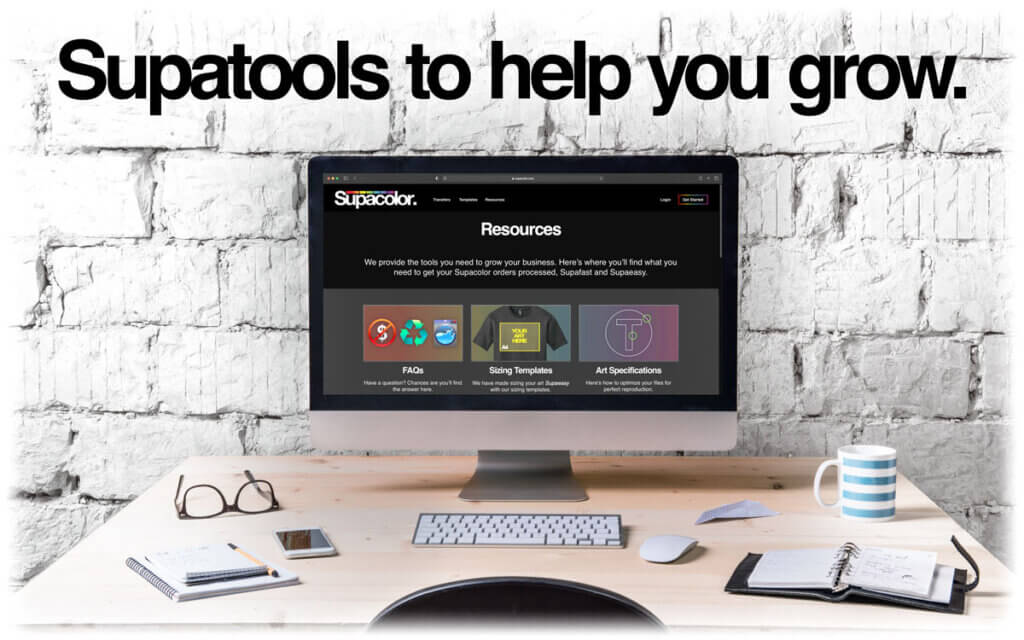
Helping people grow is an attitude that runs deep through our culture. We’re not just a heat transfer company, we're a partner that lets you focus on what you do best: creating, producing, designing, building, selling and succeeding.
Read on for Supatools to help you along your journey!

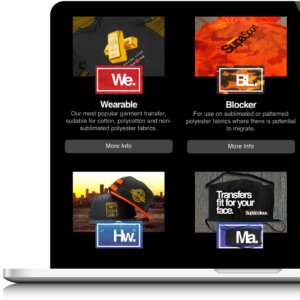
Supacolor comes in several different transfer types, each one uniquely designed for specific fabrics and garments.
Click the button below to learn more about The World's Best Heat Transfer.
With Supacolor, anyone with a heat press can print garments like a pro.
Check out these pressing instructions to help you out along your way!
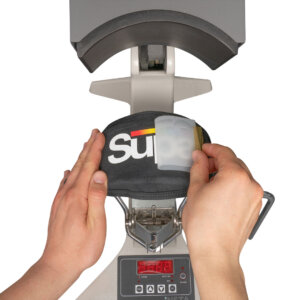

From tutorials on how to use our ordering software, to tips on growing your business and testimonials from our Supafam, we've got videos that will inform and inspire you.
Supacolor renders incredible detail with crisp, clean edges in over a million vivid colors and gradients. Here’s how to optimize your files for perfect reproduction.
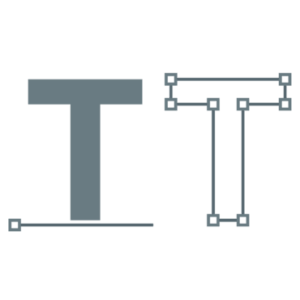

Our sizing templates make it Supaeasy to resize and save your art for us. We have included downloadable templates for Photoshop, Illustrator, and a PDF.

In this video Gary Ajené is going to show you how he made all of these zombie hip hop t-shirts, back neck labels, hats, coaches jackets, boxes, business cards, even a six pack of t-shirts and the printed boxes they came in - all with Supacolor Supagang Heat Transfer Sheets. Watch to learn how!
Fact: 100% of your customers are people. Also a fact: Everything you do should be 100% about your customer. Therefore, logically speaking, shouldn’t anything you do in your business be about making these people happy? I’d say that the road to that happiness starts with treating customers better and building a personal relationship with them.
After all, not many people do business with their enemies. As people, we like to do business with friends. So how do you work on fostering a deeper personal connection with your customers? Easy
For starters, people want to do business with other people that they know, like, and trust. “Don’t try to sell me something” is an ever-present attitude for most folks. Instead, try to uncover some facts about your potential customer. What do they like? Dislike? Where are they struggling? Ask questions and listen. Let them guide the conversation a little bit.
Be genuinely interested in them as people first. Don’t worry about closing the sale. Can you uncover any common connections with the person? Sports, hobbies, music, food, schools, or backgrounds are always good starting points. Those mutual interests can be vital to developing a deeper bond with your customer. People want you to see them as people. Not as a cash register “Cha-Ching!” Slow it down.
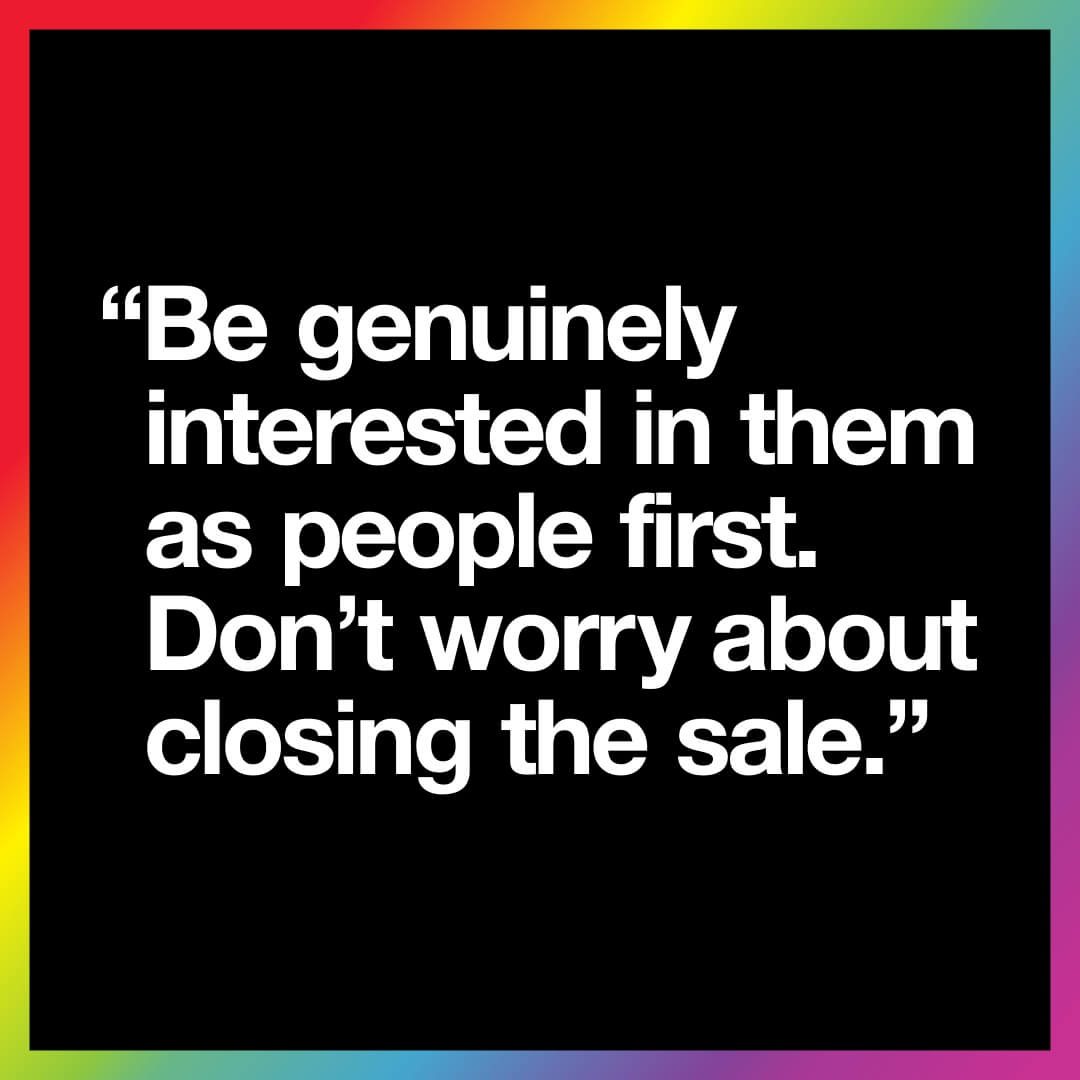
If you can, go see people in person. You can find out a lot about someone by visiting them in their office or where they like to do business. This is a priority because you aren’t just meeting them, but you are also meeting others in the company. But, travel is expensive, and sometimes people are too busy for an in-person chat. If that is the case, try to do a video call. Before the pandemic, people were hesitant about using this method of communication. Now, it is commonplace.
The goal here is to foster a personal connection with your customer by being present in front of them as another person. When everything is email and purchase order-driven, that takes the humanness out of the equation. It pays to show your smiling face.
We always want to make a good impression. I get it. However, some people come across as fake or trying too hard when they project a false facade. Relax. Be yourself. Don’t try to be anyone other than who you are naturally. It’s ok to be nervous or silly. What you want more than anything is to come across as genuine.
Someone asked me the other day for advice.They wanted to know how to determine who makes the purchasing decisions at a big company that they had targeted as a potential customer. They were really worried about it and actually had some anxiety about the situation.
My suggestion was to just call them up and say, “I need your help. I’m trying to find the right person to discuss (what you do). Can you either give me their name or connect me to them?” It worked. Because this person was sincere and honest about what they were trying to accomplish, they were able to not only find the right contact within the company but land the account. It all started with them simply being human and asking for assistance. It is OK to be vulnerable and ask for help.
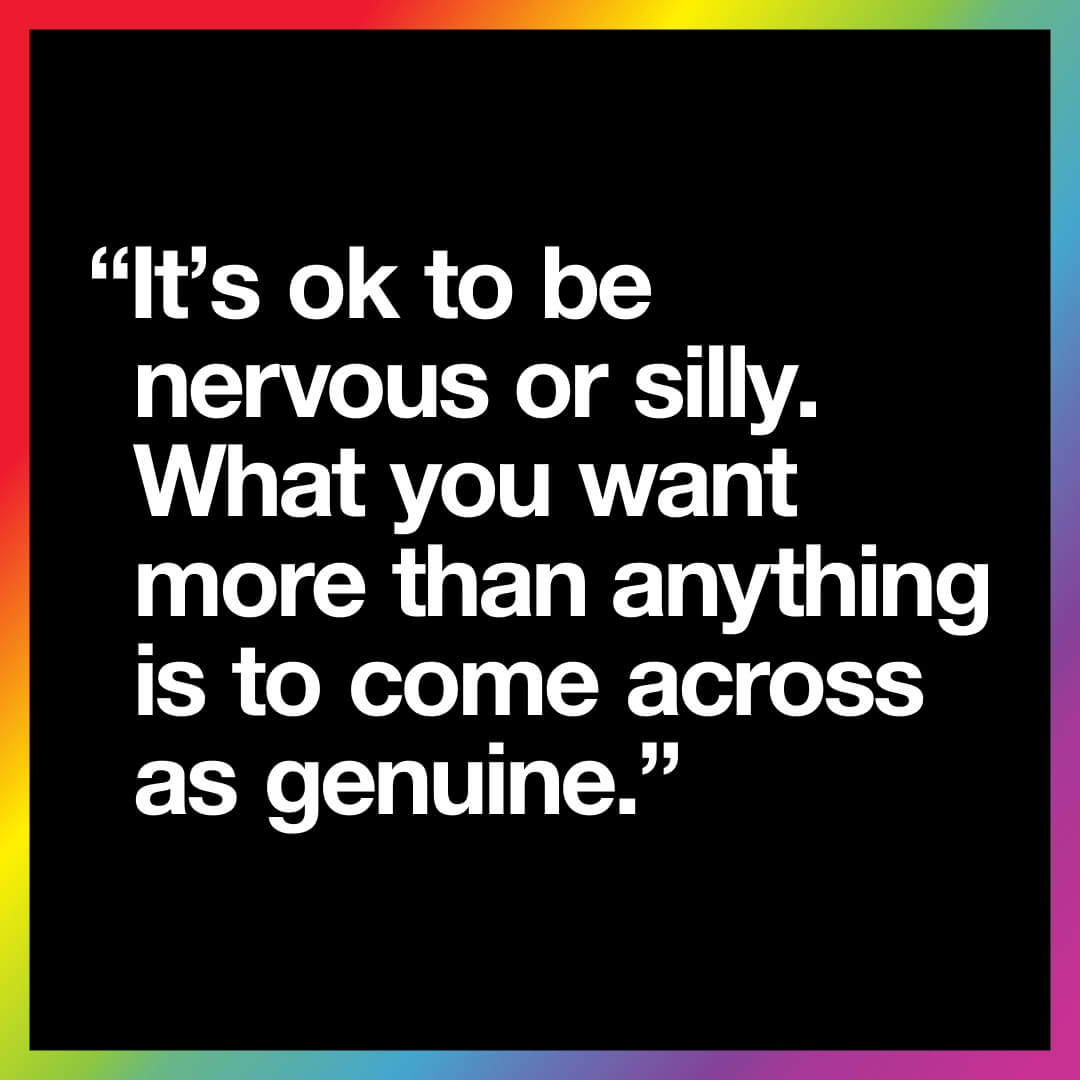
As people, we’d rather smile than frown. Can you inject humor into the conversation when working with a customer? It literally can be about anything. For some, this is going to be tough. As not everyone is naturally funny or has a sense of humor. But that might be enough if you can get that robot-like demeanor to shift into even a half a smirk. Personally, I like making fun of myself. Someone has to do it, right? It’s a good topic because I’m always present in the conversation. Happy people buy more stuff.
I call this technique “Beat the Clock.” For example, let’s say that you will send your customer a quote or follow up with an answer to a question they asked. Whatever time you stated to them, try to get it in early. If you said 3:00 in the afternoon, try to have it ready just before lunch. By tomorrow means, before you leave today. In the next hour means in about thirty minutes.
Holding your end of the deal and getting it in early will always do wonders for your reputation with the customer. Why? Because so many other companies fail to even return calls. Here’s another tip. Even if you don’t have the complete answer yet. “Hey Fred, just wanted to follow up with you. I’m working on that answer, but I’m waiting on the FedEx manager from Topeka to call me back. He hasn’t yet, but I’m on top of it.”
This is important because without hearing from you, people will fill in their own answers in their heads about the situation. “Well, I guess they don’t care about me. They haven’t called me back.” Or, the time-tested favorite, “They didn’t respond. That means they don’t want my business.” Your goal is to make every other person and company they deal with pale compared to how you operate. Personal connections and credibility are solidified every time you follow up early about something. Consistency is the key.
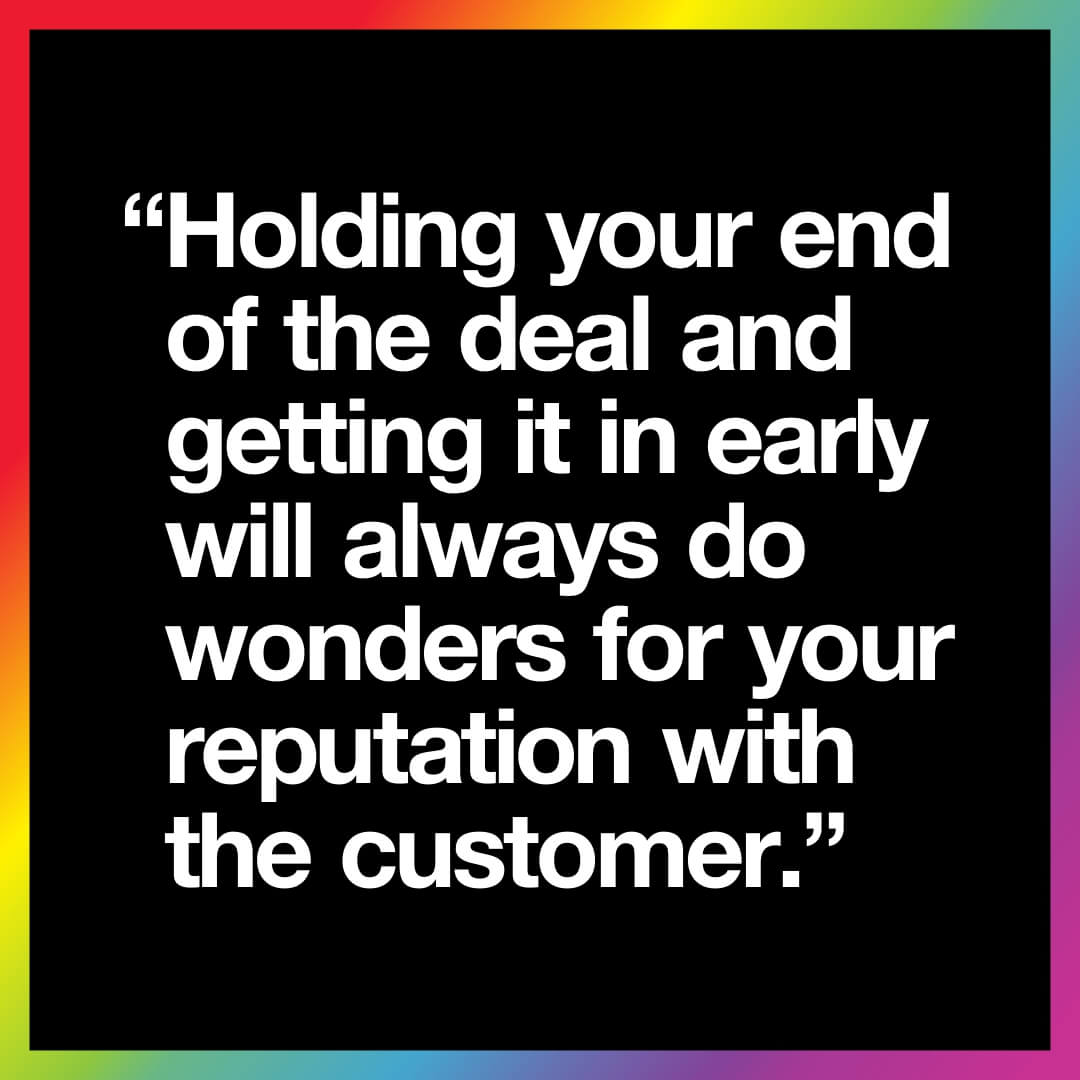
We have a vast array of ways to communicate with our customers these days. Email, text, phone, in-person, instant messaging apps like Slack, and even good old-fashioned snail mail. Do you know your customer’s preference? As not everyone's the same, you can’t treat how to communicate with them equally. While some people like emails (that’s me!), others prefer phone calls or text messaging.
The omnichannel approach allows you to meet your customer with how they like to do business. Remember, it isn’t about you or your company and how you want to do it. Communication is all about your customer and what makes them the happiest. So, can you send an art approval by text? Can you embed a video in an email?
What you want to build more than anything is a platform to reach your customers with the preferred method. To find out, simply ask them. If you have a CRM tool, this information gets logged in, and the preference flows from there. Finding out how they would like to be contacted is as easy as asking them.
While your competition is focused on being order-takers, you might consider working on innovation. Let’s name this task “Think Create Prepare Surprise,” or TCPS for short. Here, you develop new ideas specifically for your customer before they ask. For example, when I was an art director, we would iterate dozens of designs for customers and present them to the customer. In the bunch, a few were chosen, and we would be producing those designs as reorders throughout the year. Millions of shirts were sold. Did it cost money, time, and effort? You bet.
Instead of waiting for orders to come in, work on building a better personal connection with your customer by helping them make more money. In my example, those key customers didn’t ask for the designs. Instead, we dreamed them up, created the samples, and surprised them with a presentation. I know from personal experience how valuable a TCPS program can be. If I’m helping my customer make more money, don’t you think that will solidify that relationship? The effort and cost are nothing compared to customers that don’t view you as a commodity.
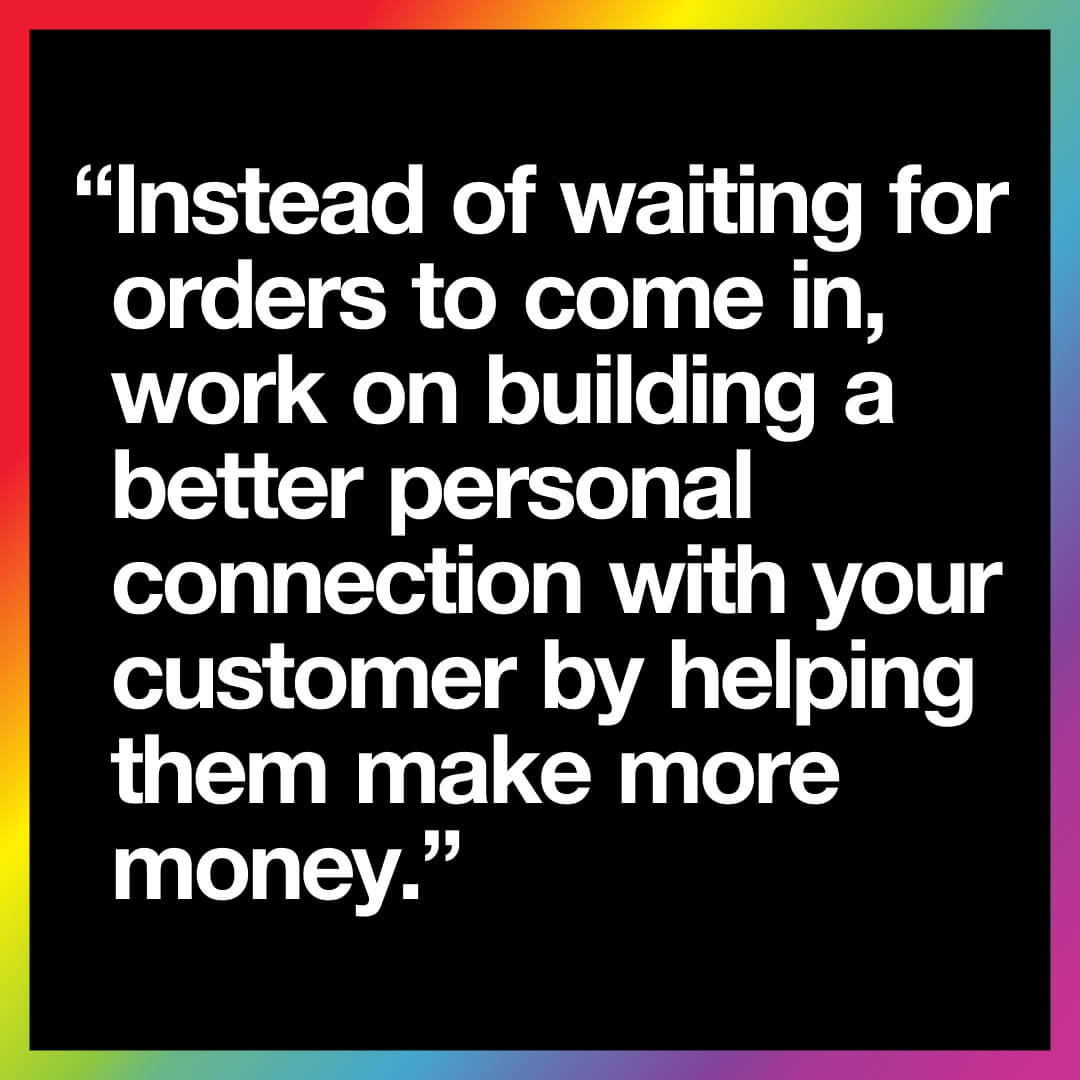
Lastly, and probably most importantly, ask this question. “What do my customers want?” If you want to be more valuable to your customers and foster a deeper connection with them, you have to see things through their eyes. Ask questions about the purpose of the project. For example, let’s say that you are talking to a potential customer from a local school. They contacted you for a quote. Sure, you can get the quantities and work up the numbers. No problemo. But what if you asked more questions?
What if you found out that the primary purpose behind the shirt order was to be a fundraiser for a capital improvement project for the school? By digging into their intent behind the project, you have unlocked the opportunity to discuss how you can build them a print-on-demand online fundraising store. Now, in a short period, you are producing apparel for that fundraising program and the football team, marching band, and even the debate team. By working on deepening the connection between your customer and your capabilities, you have increased the opportunity for more sales by strengthening your personal relationship.
Recently I had the pleasure of taking a private marketing class from the incredible Mark Schaefer. Mark is a gifted writer and storyteller and once was a student under the legendary Peter Drucker.
During the class, Mark told the tale of how Drucker would emphasize a particular point in a lesson with the phrase, “...but, is the dog barking?” This was an allusion to the Sherlock Holmes story “The Adventure of Silver Blaze,” where Holmes solved a mystery where a dog that should have been barking wasn’t. Therefore the suspect had to be someone the dog knew. This is important because if you are in a situation and expect to hear a “dog barking,” and it is not, don’t ignore that clue! This could be the one thing that provides you with the information that other people might miss.
Think about anything and everything you buy. Whether it is ice cream or a new car, something about that particular brand convinces you to make that purchase. This is the dog that constantly barks. It is personal and is not always about features, benefits, or even price. It is about emotion. How does the brand make you feel?
Smart? Happy? Relieved?
Until one day, it doesn’t. Something about that brand changes for you. It doesn’t make you feel smart. Or happy. Or relieved. It might make you feel dumb. Frustrated. Angry even. And now, let’s flip that. Let’s not talk about you. Let’s talk about your customer.
When a customer calls your company to complain, they are the barking dog. They still love you. That’s the reason they are complaining. To give you a chance to fix it. They want you to hear their bark to show you they still care. Embrace that bark! That bark means you still matter to them in some way. But when the dog doesn’t bark? That customer has moved on. They don’t love you anymore. Somewhere out there they are running with a different pack that doesn’t involve you.
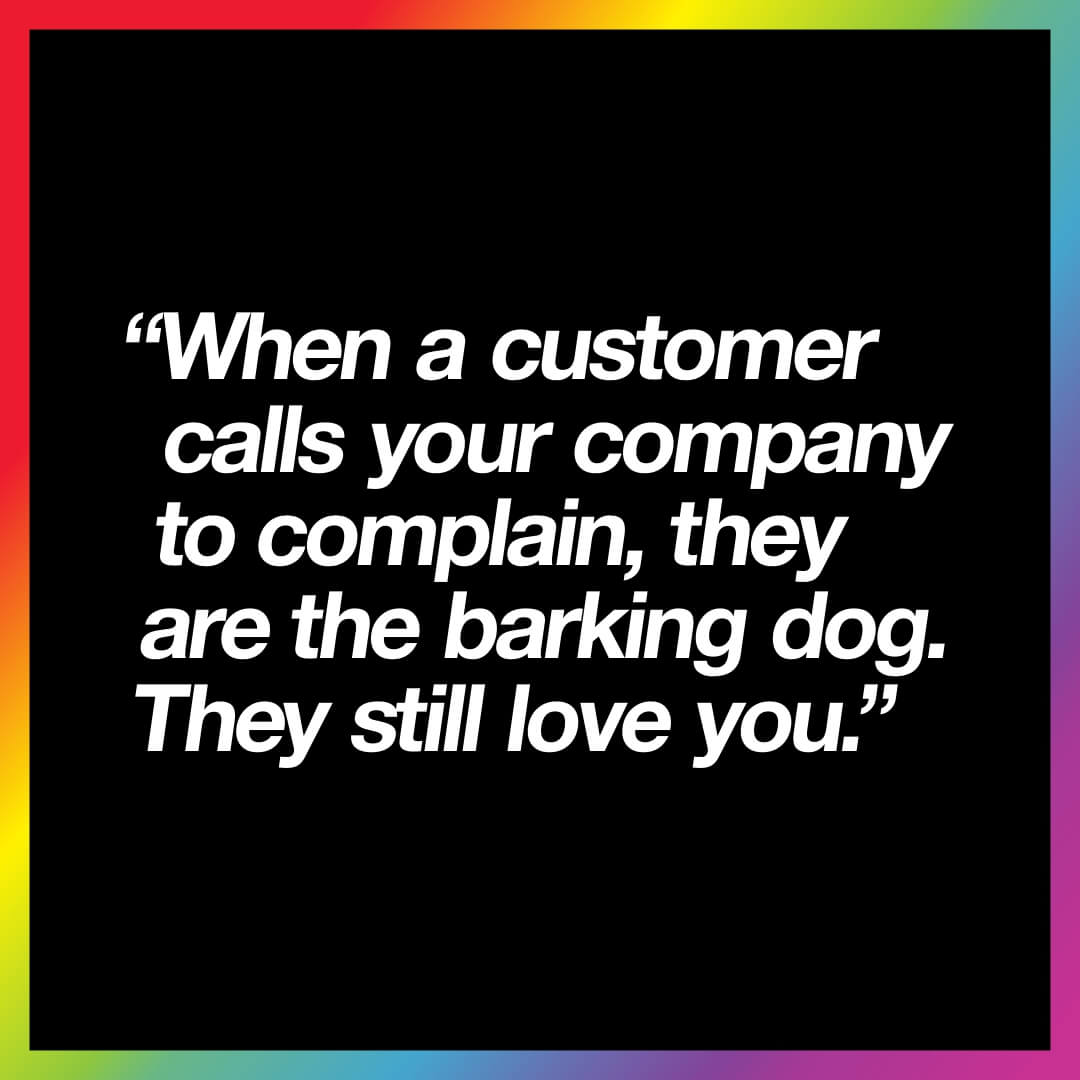
Here’s the question of the day.
Do you even notice? Can you run a history report of your customers over the last three to five years? How many are still active? Count up the silent dogs on the list. How big is that number?
Why is this important? Let’s say that you have a customer that has an excellent relationship with your company. They have been a client for years. You have a solid rapport and have never had any problems with anything. Then one day, you notice that they have been relatively quiet lately. Yep. That dog isn’t barking. So you call up the contact you’ve had throughout your relationship. You discover that this person is no longer with that organization. Instead, they took a job with a different company.
“That’s ok,” you say, “I’m just calling about your next shirt order. I’d like to speak with the person handling that now.”
Can you feel that brick in your gut just reading that? You know what comes next.
“I’m sorry, but the new person has brought in their own vendors. So we won’t be needing your services now. Thank you.”
Ouch. What changed? You can say that you “Didn’t do anything wrong,” but that is not precisely correct.
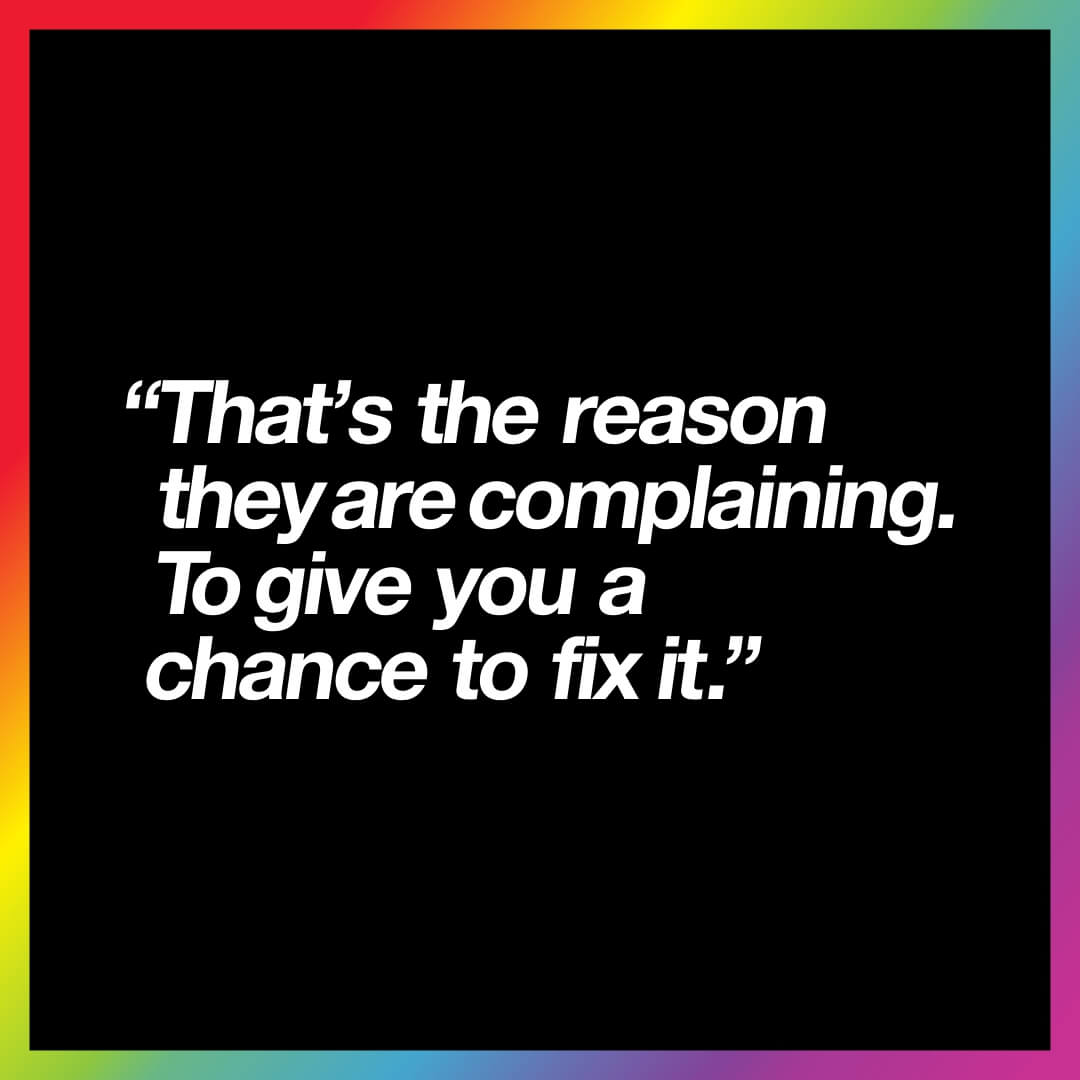
Suppose you had a better relationship with the company and not just with one person. In that case, you could have jumped into the queue with the new decision-maker. Maybe there would have been an ally on their staff that said, “Hey, wait a minute, we should still use these guys.” However, many savvier companies have working agreements or contracts set up, so the relationship lasts longer than a particular person’s employment.
How solid of a foundation do you have with any of your clients? If you are only at the tail end of a website click or purchase order send, you might want to solidify that relationship a bit more
Dogs bark to call attention to something. Woof! Woof! Woof! Simply means, “Hey! Over here!”
Everyone in the neighborhood knows that the garbage truck is rounding the corner. Or that there is a squirrel in the backyard. Or just where is that ball with the jingly thing inside? Is it stuck under the couch again? I need some help! The most effective barking dogs are actually those who don’t bark much. Dogs that seem to yap all the time get tuned out. They become instant background noise. On the other hand, when a dog that hardly ever barks let’s out a loud “Whhhhoooffff!” everyone pays attention.
Sometimes I think people bark like dogs.
Some yap incessantly about everything but don’t ever say anything meaningful. And then others rarely speak, but when they do, everyone listens. It is usually something insightful, funny, or profound. In your neighborhood (marketplace), what type of dog are you? Are you being ignored? How do you know?Do you yap constantly, or do people listen in when you bark? “Hey! Over here!”
Let’s get back to how Sherlock Holmes used the clue, of a dog not barking, to solve the crime. What habit or behavior has your customers, suppliers, or employees changed lately? “...is the dog barking?”
No? What has changed?
Let’s face it, after March of 2020, with COVID and our rise out of that predicament, business and markets have been disrupted. Everybody’s behavior has changed, and you could argue that it is not going back.
Now, we have other world events that have further disrupted business. Supply chain issues, challenges related to the war in Ukraine, and the meltdown of workforce availability.
When the dog isn’t barking, does that mean a fracture in the status quo?
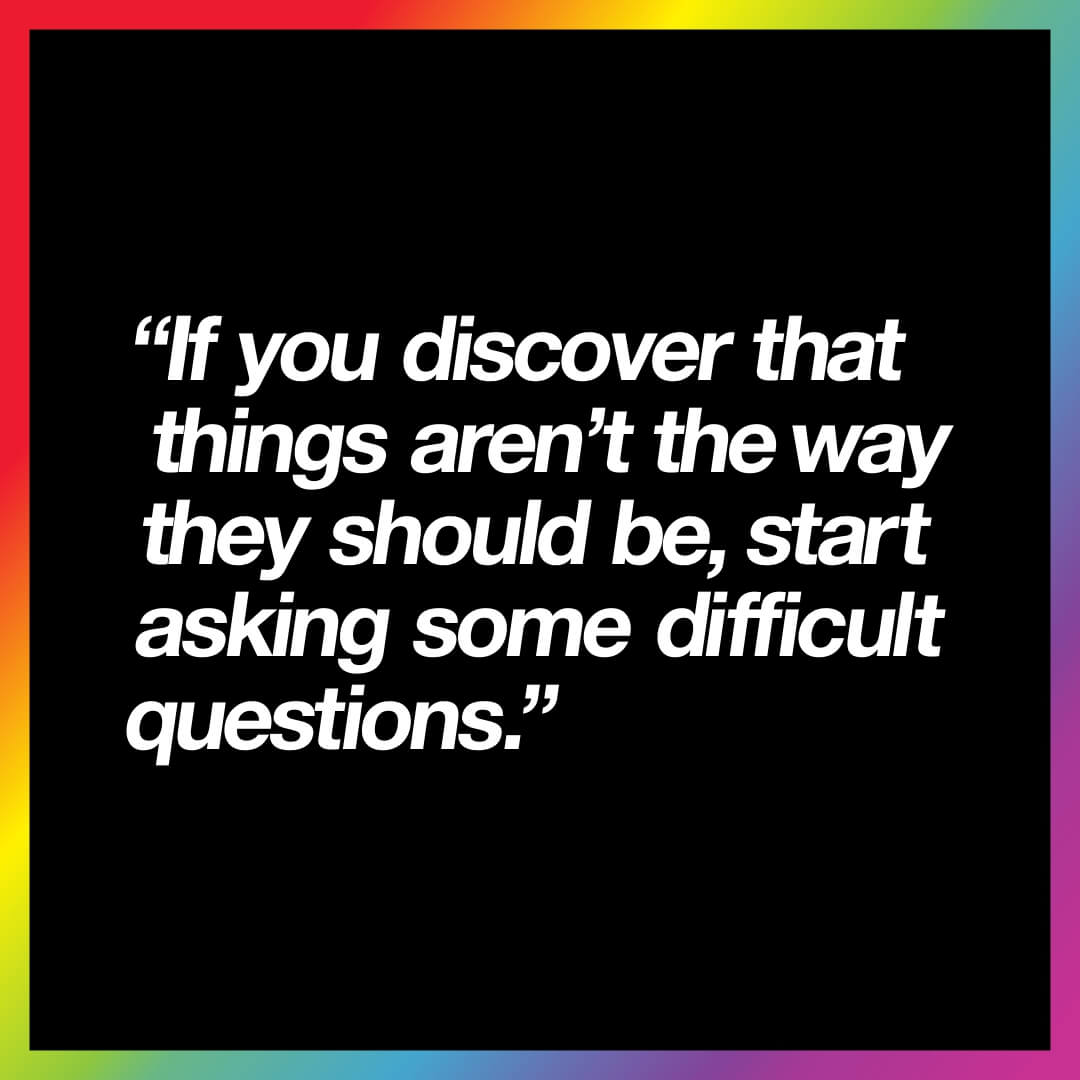
If your customers are faced with anxiety and uncertainty from everyone else, could this signal an opportunity for you to develop a unique solution that catapults you as the dominant leader? Everything right now in business is being renegotiated as we claw our way out of the pandemic resurgence. So now more than ever, people are open to new ideas.
When the dog isn’t barking, that could signal that there is an opportunity to develop something meaningful. But unfortunately, the silent signal sometimes is confusing. It is easy to miss.
If you discover that things aren’t the way they should be, start asking some difficult questions. Why is something happening? Who is frustrated or confused? What changed?
Explore the rabbit holes. Often, they are worth going down.
Pretend for a minute that this is your dog that isn’t barking. Yeah, I know you are probably a cat lover…but bear with me. Wouldn’t you want to know what’s going on with the dog? Not acting as usual could be a sign that something is wrong. So it’s worth getting up out of your chair and checking out, right?Here’s the question, though. Will you be open to what you find? Can it get past your filters and the distracting noise surrounding you and land on your brain and register?
Are you curious enough to explore the seams that might be opening up? Trust me. Many people don’t even realize that the dog isn’t barking anymore. They are going to miss the clue. Therefore, if you start poking around and asking questions and then taking what you find and playing with it…you might find an epiphany. This could be your “Eureka!” moment.
Just to be precise. To be a leader, you don’t need all of the answers. Instead, what you need most is the willingness to be curious and explore. Pull the thread.More than anything right now, you should be asking questions. Be humble. You don’t know what you don’t know.
Pay attention to the new things. These are the new habits and behaviors. The new technologies. New roads are being paved, and you are not traveling down them yet. In fact, maybe nobody is.
Yet.
The dog not barking is what is going to lead you there.
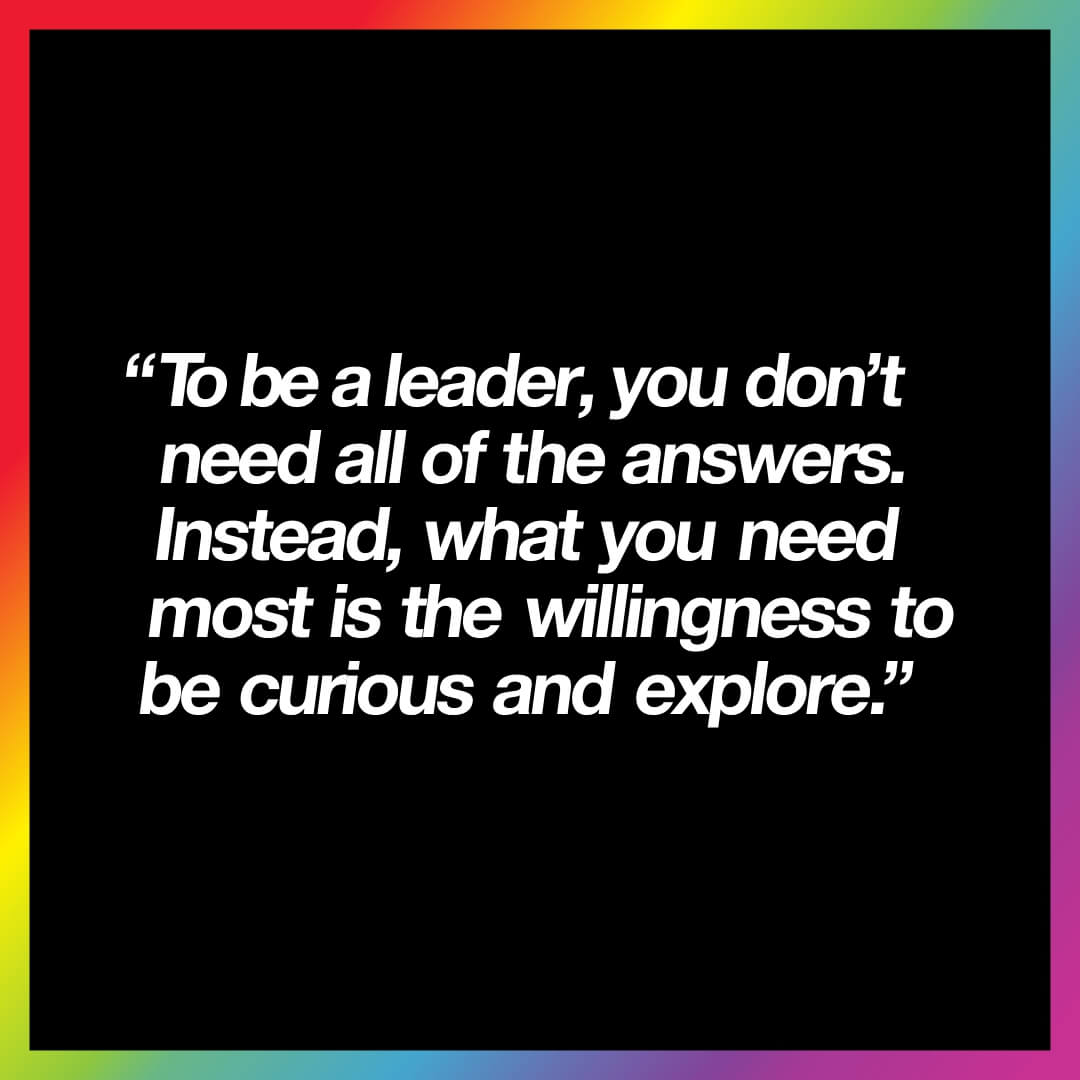
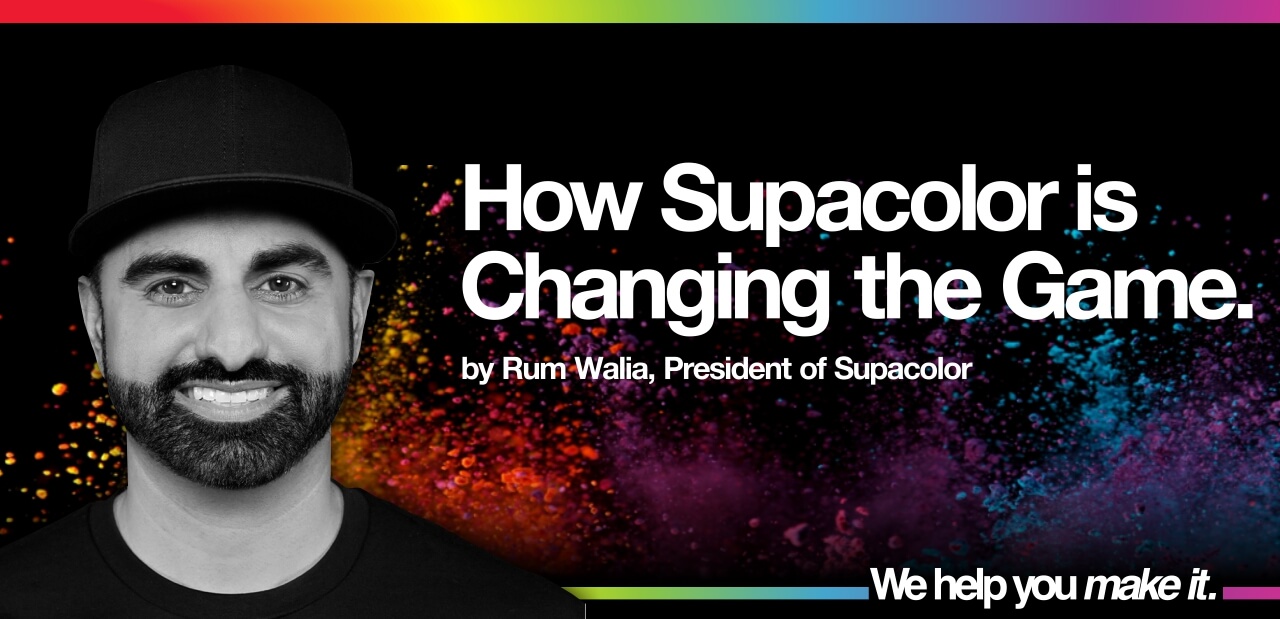
by Rum Walia, President of Supacolor
The story of Supacolor goes far beyond our heat transfers. As we like to say around here, “We’re more than just a heat transfer company.” Our company’s ethos is manifested in our belief that anything is possible and in our aspirations to help others make it. In one sense, by ‘make it’, we help in the making of t-shirts, caps and bags – but what we are really saying is that we help people make it in business and in life. We are forever linked to our Supafam (our beloved customers) because we only exist because of them. When they win, we win. Our success is predicated on how we help people grow, not by how much Supacolor we sell. A heat transfer isn’t much of anything unless it is applied to a garment. In the same way, Supacolor isn’t much of anything without its Supafam community. We’re incredibly grateful to everyone that helped us grow and we are committed to helping those around us do the same.
Supacolor was created by decorators for decorators. The founding partners of Supacolor, Bill Armitt, Mike Modgill and myself, all have experience running our own garment decorating businesses – screen printing is in our DNA. We understand the risks and challenges decorators face every day.
And more specifically, we know the challenges of printing multi-colored designs with gradients on complex fabrics, whether using inks or threads. For example, the combo of a 6-color design and a 10-piece job would make most decorators run for the hills. Running these jobs didn’t make any sense. While everyone else saw a barrier, we saw an opportunity and jumped all over it.
Supacolor was created to solve problems for screen printers and embroidery shops. Allowing them to say yes, when before the answer was no. With Supacolor and a heat press, you could now print anywhere. You no longer needed expensive equipment, a lot of space, or skilled, experienced printers. Creating freedom and opportunity for decorators to grow their business in ways that complemented what they were already doing.
The ambition to solve the problem of printing multi-colored designs was the motivation for inventing Supacolor. Bill and Mike talked about this frequently back then – they didn’t want to stop the carousel presses to screen print complex jobs, but they also didn’t want to turn away customers. They just knew there had to be a better way.
So, they set out on a journey that would see them innovate, collaborate and ultimately bring people all over the world together.
The early days were challenging. Bill and Mike had to find a digital offset press. Getting access to something like this wasn’t easy, especially when it was very experimental. Sticking PET Film through a press could damage it. But they found a used one for sale and made a big bet on the future. With the digital front end in-hand, the guys had to find a way to screen print the rest of the transfer.
Believe it or not, Bill was screen printing the back of the transfers on a hand bench trying to get the registration on point. The limitations and the inaccessibility to equipment didn’t stop them, because the hustler never quits. The one thing that our entire Supateam has always had in common is that we are obsessed problem-solvers. Relentless in the quest to find something better, Supacolor was born.
You’ve probably heard us say Supacolor is the “World’s Best Heat Transfer.” You might think that we’re being arrogant by saying this, but we really believe it. Let me tell you why. Its beauty lies in the simplicity of its construction and the versatility of its performance.
To start, the construction and design of the transfer is elegant. Every Supacolor is created with a combination of digital printing and screen printing techniques, making it a true hybrid transfer.
On the front end, we use the very best digital offset press technology to print every color except white. These half-million-dollar presses are set up with seven colors (cyan, magenta, yellow, black, violet, orange and silver), giving us a broad spectrum of colors that are unmatched in the industry.
Our printing capabilities include Pantone color matching (think T-mobile pink or Coca-Cola red), printing CMYK and specialty matte metallics. We can print graphics super sharp. I’m talking about line weights as small as 1 pt (0.35 mm), so you can print small details. Every. Tiny. One.
We finish each heat transfer off with one of three different kinds of adhesives to print on various fabrics. What’s different about Supacolor is that we’ve created unique transfers specifically suited for different materials. Why? Because we want our transfers to last longer than the products they are applied to. It doesn’t matter if it’s t-shirts, sweaters, caps or bags. Supacolor’s formula is designed to make the transfer look good for as long as possible. That’s why they’re wash tested by a third party lab and proven to last more than 70 washes. We want your designs to look amazing, even when the garment is wearing out. If you don’t look good, we don’t look good.
The real magic of making Supacolor actually starts before we even get to the processes I’ve just described. It begins on the front end with our prepress team: Supaflow. This is where our team prepares the submitted artwork. Anyone that has been in the print industry for even a short while knows that you’re only as good as the artwork you get.
Our team goes to great lengths to ensure that every graphic submitted to us is treated with the utmost care and given the attention it needs to print optimally. This means that if we need to redraw your artwork, we will. At no extra charge. It’s our way of making sure every Supacolor is made to the highest standard.
When you add up the sum of the parts – digital printing, screen printing and Supaflow – you can see why we end up with the World’s Best Heat Transfer. A transfer that we proudly serve up daily, to thousands of customers every month. Each step of the way, we inspect and assure our quality. When we don’t get it right, we don’t blame our customers. We take ownership and make it right, because we’re guided by our daily mantra: Supafast. Supaeasy. Supacolor.
This is more than a marketing line. It’s who we are.
We are Supafast: We understand that a quick turnaround time is critical in this industry.
We are Supaeasy: Nothing is too much trouble. We make it easy for everyone involved.
We are Supacolor: We take pride in everything we do. We don’t settle for good; we aim for great.
I’ve said it before: we are more than just a heat transfer company. We are Supacolor. Everything we do is about the people. It always has been, and always will be. What we do and how we do it isn’t as important as why we do it.
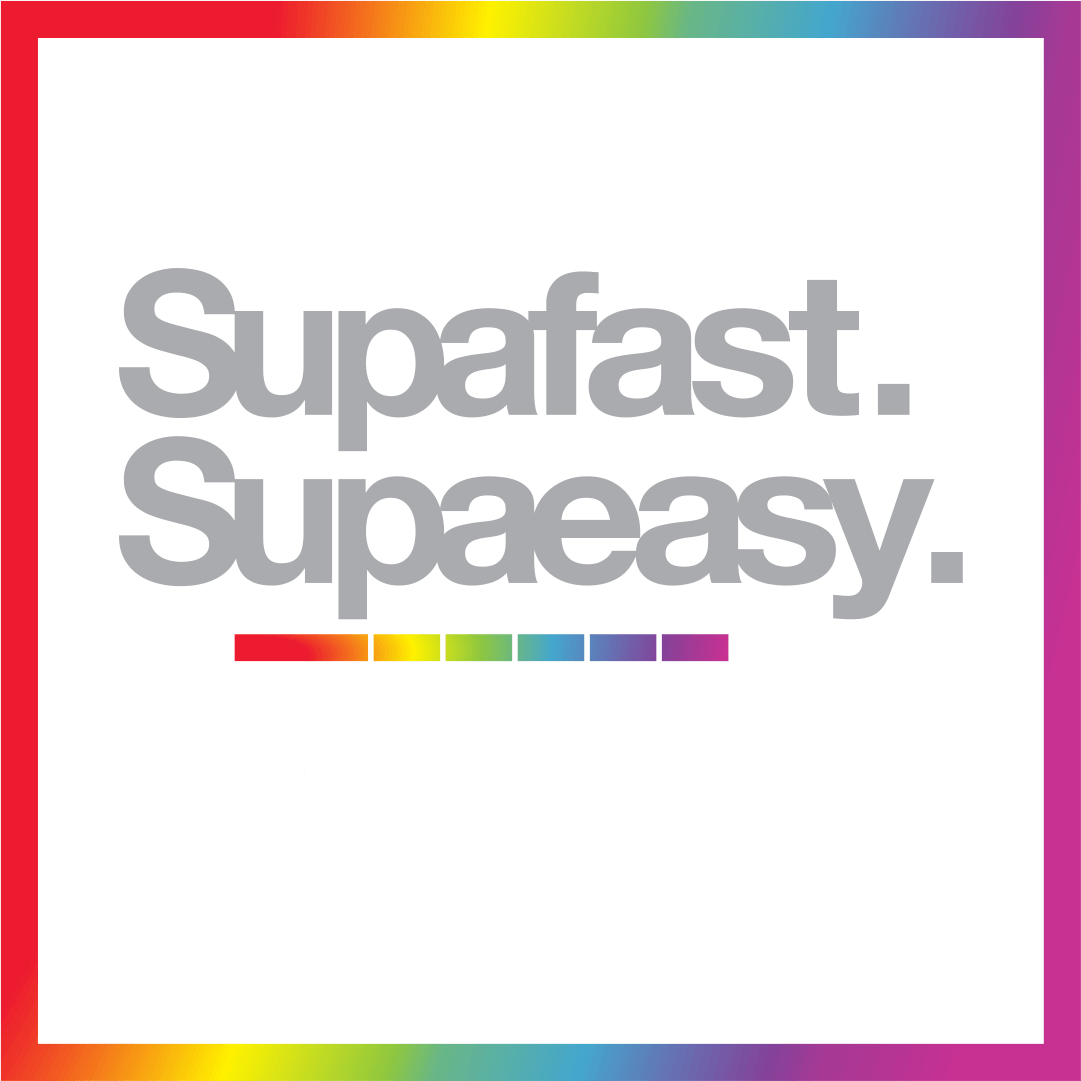
Why do we do it? To help you make it, in business and in life. So let me ask you: how can we help you make it?
Born in Spain and having lived in Mexico for years, Natalia Trevino is a US based fashion designer and the host of the 'Unfiltered Fashion Talks' podcast. Her brand, Natalia Trevino Amaro, creates timeless, classic pieces designed for anyone and everyone to feel beautiful and confident in their own skin. With ethical production being a priority, Natalia makes every item in her shop alongside freelance seamstresses in her own home studio.
And be sure to check out Natalia's TikTok!
https://www.tiktok.com/@nataliatrevinoamaro